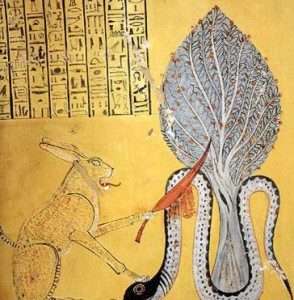
Celtic ''Trinity'' knot. Coincidence or a ...? Try ''three''.

Seahenge. Hunstanton to enlarge.
As is the intention of : Many bodies found {Ryburgh / Norfolk} in hollowed out Oak timbers that were found to be full of knots. The hypothesis is : ''Wood very poor quality" And/or "Unsuitable for creating quality work" {Therefore} - "These people are clearly not using the best wood for their coffins" And/or "Seems to hark back to very ancient traditions'' And/or "It seems that our ancestors were blending pagan with Christian traditions" And/or "A precious glimpse of a forgotten ritual" Hence the final conclusion being: "Classed as a poor Christian burial site." ['Digging For Britain' Episode 3. Dec.2016]. Enlarged elsewhere. Try ''knots''.
"A whole forest was used up {in reference to the 2nd 'labour' of Heracles} - being an oblique symbolic reference to the uprooting of the dark forest that is widely used as representation of the condition of the material world."
'The Spiritist Fallacy' by Rene Guenon.
Question. What is ''metal of the mind'' represented by? Question 2. Do the two go together? {'bosom'?}.
'Intelligence of the heart' ? Enlarged elsewhere.

Side note: "Things like Google Translate can match the hidden patterns between different human languages and translate them....AI tools can find these invisible patterns that we cannot see and link them to patterns between languages....It finds the shapes of certain phrases - from billions of data - without the need of a dictionary. It does not even know that it is dealing with a language." ['Royal Institution Xmas Lectures' / 2023].
Could it be used someday for a mindset - within {say} a curriculum? The Hands of 'god'?
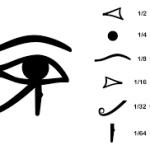
Pineal 'shape'.
A working example {the 'pagan' one?}: "And this brings us to the THREE Rites of Assumption themselves. True to Druidic pattern, the nine rites given in the Pheryllt are grouped into three groups of three, each set denoting a past-present-future 'relationship'. The second of these sets, has been chosen as most appropriate to this chapter: 1 = Song of Taliesin {I have been...}, the past. 2 = Song of Amergin { I am... }, the present. 3 = Song of Bluestar {I will be...}, the 'future'.''
Which represents the feminine aspect?
 All in relation to: ''The nine so-called Rites of Assumption which are druidic visualization exercises aimed at 'tapping' into raw, natural archetype 'realms' . And since A Boy {child?} to Magic Born {Heka?} deals specifically with colourful, spring-tide beginnings...'' [Page 50, 'The 21 Lessons of Merlyn: A Study in Druid 'Magic' and Lore].
All in relation to: ''The nine so-called Rites of Assumption which are druidic visualization exercises aimed at 'tapping' into raw, natural archetype 'realms' . And since A Boy {child?} to Magic Born {Heka?} deals specifically with colourful, spring-tide beginnings...'' [Page 50, 'The 21 Lessons of Merlyn: A Study in Druid 'Magic' and Lore].
Amergin in relation to 'spring'. Taliesin in relation to 'summer'. Bluestar? Try ''lily''.
Ebb and flow as a means...?
From a different perspective: ''And Moses said unto god, Behold, when i come unto the children of Israel, and shall say unto them, 'The god of your fathers has sent me unto you'; and they shall say unto me: What is his name? What shall i say unto them? And god said unto Moses, I AM THAT I AM: and he said; thus shalt thou say unto the children of Israel - I AM hath sent me unto you.....This is my name forever, and this is my memorial unto all generations. '' [ Exodus 3:13 -15].

Single or double? As a means....?
 Side note: "It seems also to be known as the Double Ship. Jensen says that ''the amphibious Oannes of the Persian Gulf was also associated with Capricorn...A cuneiform inscription designates it as the Father of Light - a title which, astronomically considered, cannot be right except about 15000 years ago, when the sun was here at the summer solstice; that ''the goat was sacred and exalted into this sign'' and that a robe of goatskin was sacred dress of Babylonian priests...indicting that it was probably millenniums ago, perhaps in prehistoric days when Capricorn first came into the zodiac...Its symbol is the twisted tail {knotted} of a sea goat..." ['Star Names and Their Meaning'].
Side note: "It seems also to be known as the Double Ship. Jensen says that ''the amphibious Oannes of the Persian Gulf was also associated with Capricorn...A cuneiform inscription designates it as the Father of Light - a title which, astronomically considered, cannot be right except about 15000 years ago, when the sun was here at the summer solstice; that ''the goat was sacred and exalted into this sign'' and that a robe of goatskin was sacred dress of Babylonian priests...indicting that it was probably millenniums ago, perhaps in prehistoric days when Capricorn first came into the zodiac...Its symbol is the twisted tail {knotted} of a sea goat..." ['Star Names and Their Meaning'].
Question. ''Double ship'' = 'boat of glass'? Enlarged elsewhere.
Continued: "In early days Polaris was known as the He Goat''. Try ''goat'' and/or ''B. Cox''. To see something other than the obvious.
Question. What 'planet' is exalted in Capricorn? What does it mean? Try ''knot'' Part 3.

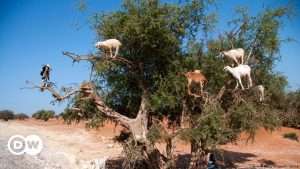 And/or: "Nestled in the heart of Prague, at Hastalska Street No 1, lies a mysterious abode steeped in history - the Museum of Alchemists and Magicians of Old Prague....It dates back to 900AD making it the second oldest building in Prague. Positioned near Grand Via, a vital European trade route, the house played host to merchants bringing exotic goods and knowledge from the Far East....Legend has it that a flaming chariot, pulled by goats used to appear in front of the house." [Readers Digest / March 2024].
And/or: "Nestled in the heart of Prague, at Hastalska Street No 1, lies a mysterious abode steeped in history - the Museum of Alchemists and Magicians of Old Prague....It dates back to 900AD making it the second oldest building in Prague. Positioned near Grand Via, a vital European trade route, the house played host to merchants bringing exotic goods and knowledge from the Far East....Legend has it that a flaming chariot, pulled by goats used to appear in front of the house." [Readers Digest / March 2024].
"The coronation chair is the oldest peice of furniture - still in present use - in Europe....Over seven centuries twentysix monarchs have been crowned on it.... Goat hair brushes are only used to clean it." ['Countdown to the Coronation: Inside Westminster Abbey' / CH5].

Refresher: "The light of the body is the EYE: if therefore thine eye be 'single', thy whole body shall be filled with light". As a means...?
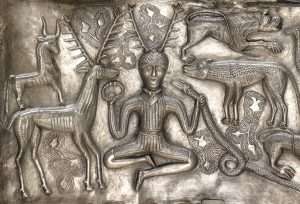
Seated on what?
Continued: "The Esna triad expresses the archetype of and 'construction', by implanting the three principle vital forces into the physical plane. Khnum represents the earth element in his form as ''divine potter,'' who fashions the Ka [''double''] of human beings before they are born into the world. Neit, his consort and often called the ''warrior goddess'' channels the elemental 'fire' into the physical body in her role as 'sustainer of species'. As ''weaver of forms'' she is also healer of the body, and her legendary temples were well regarded in antiquity for the treatment of illness. The 'child' of their 'union' is Heka, whose name means ''magical power.'' Heka is depicted emerging from a lotus, representing the watery region of the collective unconscious, to which all the living belong." [Chapter two, 'The Sacred Tradition of Ancient Egypt]. Try ''child'' and/or ''lily/lotus''.
Side note: Mose/moshe = Moses link to the words child and crocodile.
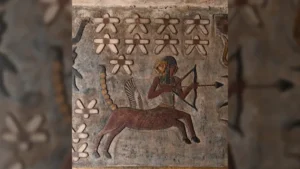
This zodiac sign depicts Sagittarius. While the zodiac signs at Esna were known before cleaning was done the work allows them to be seen more clearly. Here we see a centaur with a scorpion's tail aiming a bow and arrow. AND/OR on another picture we see a scorpion with claws at the front, eight legs and a sharp stinger at the end of its tail. 'Eleven' five pointed stars can be seen above.
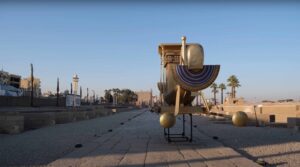 And/or: A restoration project has revealed ancient Egyptian zodiac paintings and inscriptions at the Temple of Esna....Zodiac paintings decorating the roof and walls of the 2,200-year-old Temple of Esna in southern Egypt have been revealed during a restoration project that's clearing away two millennia's worth of grime, soot and bird poop, researchers announced March 20. Restorers painstakingly cleaned the zodiac artworks, many of which were painted onto the temple's ceiling. Other restored images include depictions of the planets Jupiter, Saturn and Mars, as well as images of stars and constellations used by the ancient Egyptians to help measure time, researchers said in a statement. The team also conserved ancient images of snakes, crocodiles and hybrid creatures, such as a snake with a ram's head.
And/or: A restoration project has revealed ancient Egyptian zodiac paintings and inscriptions at the Temple of Esna....Zodiac paintings decorating the roof and walls of the 2,200-year-old Temple of Esna in southern Egypt have been revealed during a restoration project that's clearing away two millennia's worth of grime, soot and bird poop, researchers announced March 20. Restorers painstakingly cleaned the zodiac artworks, many of which were painted onto the temple's ceiling. Other restored images include depictions of the planets Jupiter, Saturn and Mars, as well as images of stars and constellations used by the ancient Egyptians to help measure time, researchers said in a statement. The team also conserved ancient images of snakes, crocodiles and hybrid creatures, such as a snake with a ram's head.
While the existence of the zodiac and some of the other images at the temple were already known to researchers, the cleaning and conservation have allowed the artwork to be seen in more detail. The restoration work also revealed previously unknown inscriptions, team co-leader Christian Leitz, an Egyptology professor at the University of Tübingen in Germany, told Live Science in an email. "The zodiac itself is part of Babylonian astronomy and does not appear in Egypt until Ptolemaic times," Leitz said in the statement. The Ptolemies were a dynasty of rulers descended from one of Alexander the Great's generals, who ruled Egypt between 304 B.C. and 30 B.C, Leitz said. It may have been the ancient Greeks who introduced the zodiac to Egypt.
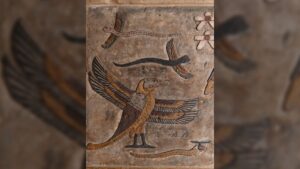
Images of hybrid animals were revealed in better detail during the cleaning and restoration work. Here we see a bird-like creature with four wings, a dog-like head, and a snake for a tail. There are also two winged serpents flying about and one snake-like creature at the bottom.

Sawn palm stem: Palms do not form annual tree rings.
After its introduction, the zodiac became popular in ancient Egypt. "The zodiac was used to decorate private tombs and sarcophagi and was of great importance in astrological texts, such as horoscopes found inscribed on pottery sherds," Daniel von Recklinghausen, a researcher at the University of Tübingen, said in the statement. While few ancient Egyptian temples had zodiacs depicted on them, a well-known example is a temple at Dendera, which has the zodiac along with images of five of the planets, Leitz told Live Science.
Archaeologists have discovered fortysix stunning depictions of goddesses from ancient Egypt, which were previously buried under layers of soot and bird poop. Artists created the detailed and colorful frescoes on the ceiling of a temple nearly 2,200 years ago. The team found that the temple's paintings depict Nekhbet, a goddess who is depicted like a vulture, and Wadjet, a cobra-headed goddess who has wings. Nekhbet is shown wearing the white crown of Upper Egypt and Wadjet wears the crown of Lower Egypt. Nekhbet and Wadjet were sometimes referred to by the ancient Egyptians as the "two ladies."
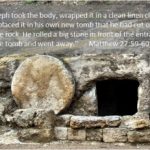

Tomb or womb?
And/or: ''The visual presentation of Esna represents one of the core mysteries of Egypt. How everything that is light becomes dark and how what was once dark becomes light.....Dedicated to the ram god Khnum i.e., transformative powers of life/death.....Temple up to its neck in silt, only roof and the tops of the sixty foot lotus capitals visible....due to deposits left by the ''receding Nile FLOODS''.....Khnum who sculpted men from mud, and inspired them with his breath....The inner sanctuary, said to have been built by Tuthmosis III - who likewise built the sanctuary and festival hall at Karnak {'joy'?}.....It has the air of a tomb rather than a temple...Hieroglyphs on the ceiling show an eight armed sky goddess {Nut} and a two headed slug with a tree growing from its back....Sobek also shown - the god of destruction as opposed to Khnum the god of creation....'' [Page 260 'Dreams of Isis'].
And/or ''head jars'' found elsewhere with tree shown growing out of it.


Rhomboid or Rhombus? Any right angles?
N.B. Black Pyramid? i.e., its core being made from mud brick. Built on unstable clay ground. Begins with dressed Tura limestone with occasional archway structure within . Cedar {horizontal beams} make the 'roof'. Mud brick above that. Exterior of limestone. Black capstone on top. Found at its 'feet'. Also found 'accidently' {as was Nefertiti's bust} was a limestone copy {'right angles'} of the internal structure of Amenemhat III eventual tomb at Hawara. His final resting place. Or is it?
Question. Those dubious finds made by whom? Initiates from Mystery clubs?
Those that understand that universal mind set?
But why?

''Khnum is the soul of Shu.'' {P. 44 'Ancient Egypt' / July-August 2023}.
''Says the Hymn to Khnum inscribed on the temple walls: Thou has raised up heaven to be a dwelling place for thy soul, and thy didst make the great deep that it might serve as a hiding place for thy body.'' [Page 258 'Dreams of Isis'].
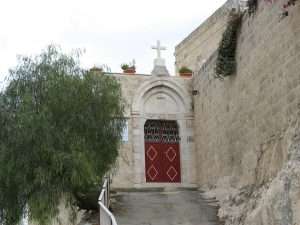
Lozenge?
Analogy: " The St. Onuphrius Monastery (Greek: Ιερά Μονή του Οσίου Ονουφρίου) is an Orthodox monastery for women located in the potter's field (Akeldama in Aramean) that the Jewish elders purchased with the thirty pieces of silver returned by Judas Iscariot that had been given for betraying Jesus. The location is south of East Jerusalem and on the southern slope of the Gehenna valley, close to the Kidron Valley. Subject to the Greek Orthodox Church of Jerusalem, it is named after the fourth-century anchorite monk Saint Onuphrius.....

 The monastery was built in 1892 on the site of an early Christian graveyard, consisting of niches hewn into the rock face; during the fourth century, this is where Saint Onuphrius the Anchorite would sit in prayer. In addition to the cave occupied by Saint Onuphrius, there is the Cave of the Apostles, where SIX Apostles are said to have hidden during the Crucifixion.[2] An underground church has existed since the time of Constantine I (306–312), and has been enlarged over the centuries. It has been consecrated to Saint Onuphrius, with the grottoes found in the southern part of the church. From this period, the Orthodox have conserved the custom of dedicating a number of funeral chapels to Saint Onuphrius.[3]
The monastery was built in 1892 on the site of an early Christian graveyard, consisting of niches hewn into the rock face; during the fourth century, this is where Saint Onuphrius the Anchorite would sit in prayer. In addition to the cave occupied by Saint Onuphrius, there is the Cave of the Apostles, where SIX Apostles are said to have hidden during the Crucifixion.[2] An underground church has existed since the time of Constantine I (306–312), and has been enlarged over the centuries. It has been consecrated to Saint Onuphrius, with the grottoes found in the southern part of the church. From this period, the Orthodox have conserved the custom of dedicating a number of funeral chapels to Saint Onuphrius.[3]
The present monastery was built in the nineteenth century.[1] It includes terraces that dominate the floor of the valley.
'Mountains low. Valleys high'?
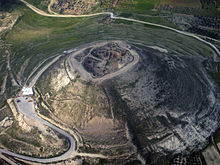 The Valley of Hinnom, Gehinnom (Hebrew: גֵּיא בֶן־הִנֹּם, romanized: Gēʾ ḇen-Hīnnōm, or גֵי־הִנֹּם, Gē Hīnnōm) or Gehenna (/ɡɪˈhɛnə/ ghi-HEN-ə; Ancient Greek: Γέεννα, romanized: Géenna), also known as Wadi el-Rababi (Arabic: وادي الربابة, romanized: Wādī l-Rabāba, lit. 'Valley of the Rebab'),[1][2] is a historic valley surrounding Jerusalem from the west and southwest[3] that has acquired various theological connotations, including as a place of divine punishment, in Jewish eschatology.
The Valley of Hinnom, Gehinnom (Hebrew: גֵּיא בֶן־הִנֹּם, romanized: Gēʾ ḇen-Hīnnōm, or גֵי־הִנֹּם, Gē Hīnnōm) or Gehenna (/ɡɪˈhɛnə/ ghi-HEN-ə; Ancient Greek: Γέεννα, romanized: Géenna), also known as Wadi el-Rababi (Arabic: وادي الربابة, romanized: Wādī l-Rabāba, lit. 'Valley of the Rebab'),[1][2] is a historic valley surrounding Jerusalem from the west and southwest[3] that has acquired various theological connotations, including as a place of divine punishment, in Jewish eschatology.
The valley surrounds the Old City of Jerusalem and the adjacent Mount Zion from the west and south. It meets and merges with the Kidron Valley, the other principal valley around the Old City, near the Pool of Siloam which lies to the southeastern corner of Ancient Jerusalem. The northwestern part of the valley is now an urban park.
REFRESHER: East is a beginning- west its ending.
From a different perspective: ''Mary Voigt's trench, overgrown with grass and weeds, still had some recognizable features. A two metre wide wall, built of massive stone blocks, ran through the trench. This dated to the time of the Galatians....Near this wall, was the corner of a stone building, which UNUSUALLY, had been roofed with tiles....a high status house or maybe a temple. But, unfortunately, the only find inside was a small {'little'} piece of carved ivory {'horn'}, leaving us guessing about its function. Between the large wall and this building - in fact, abutting the wall - was a more basic building, with walls made of wattle and daub. There were features here that may have been small kilns, and fragments of pottery inside and outside the building....Could have been a potters workshop.'' [Page149-150 'The Celts' / A. Roberts].
Spirit and Soul. Which and why?
'Twentythree' levels?

The Famine Stela. Question. Whats the remedy? Spirit or soul?
From a different perspective: ''High winds. Torn clouds race across the sky. The gravestones moan; the trees seeth, flinging tattered rooks into the air {crows?}; squalls of rain batter the window pains. The GREEN is shrewn with leaves and twigs. Tim, Nora and i attempt a game of cards in the kitchen {'13' link?}, but end up sitting in silence, watching the 'fire' roar...Yesterday the peacocks tail filled the cellar {of the mind?} with its rainbow {Iris?}, stretching like Gods covenant between Above and Below. There was a subtle perfume of lilies {'nose' link? i.e., smell as opposed to say sound, i.e., ear}. The Hermetic glass is like a double prism that divides the world into its constituent hues and returns them to the single white light that is their source and goal. This is the mystery of multipilicity....'' [Page 338/9 'Mercurius' / P. Harpur].
4:7 to enlarge.
Define {'see'} the above to get an idea {''hang on''?} - the following: The Cerrigydrudion Crown. A Celtic piece of ancient artwork. Bronze {'red'?} and leather {'cow'?} headpiece. ''Possibly signifies 'warrior' headgear - with palm leaf and lotus designs - neither of which are common to these islands {UK}.'' ['Inside Museums: St. Fagan/Cardiff. Sat.TV].
A working example: Recall Odysseus journey back to his homeland. Lotus island being its 'first stage'.
'Spirit/Soul' - as a means....?
Mayan equivalent = Waterlily? {i.e.,7th King}.
Question. Who of the 7th generation {of the Hebrew faith} - ''walked with god''?
REFRESHER: "Crowley once said that the 'magicians' sole aim was to interpret his own 'magical' record, and after many years i have come to agree with him." [Same book,i.e.,'The Magister' - emphasis, this readers].
"Pliny the Elder [23-79 AD], who actually lived during the time of Christ, in Book XXX of his 'Natural History' wrote that the Greek astronomer Eudoxus of Cnidus [409-356 BC] ....''wished magic to be acknowledged as the noblest and more useful of the schools of philosophy.'' [Chapter one, 'Serpent of Wisdom' by D. Tyson]. Recall what 'philosophy' meant.

As part of that ''true poetry''. Others found throughout.
From a different perspective: ''My thesis is that the language of poetic myth anciently current in the Mediterranean and Northern Europe was a' magical' language bound up with popular religious ceremonies in honour of the moon goddess, or muse, some of them dating from the Old Stone Age, and that remains the language of TRUE poetry....but it is only fair to warn the reader that this remains a very difficult book, as well as a very queer one {'peculiar'?}, to be avoided by anyone with a distracted, tired or rigidly scientific mind...." [Forward to the book 'The White Goddess' / R. Graves].
Side note: Why a 'serpent'? Crawls on belly {horizontal?} but can strike in the vertical? Can be found in both salt and fresh water? Sheds its skin? etc. All as a means...?
Try ''poison/antidote''.
Refresher: "The children of Seth [Set] first possessed that peculiar sort of wisdom, which is concerned with the heavenly bodies",[chapter five.' The Sirius Mystery'],
'Hair of the Dog'? {Anubis?}.
A working example: "Could we say that Peter, James and John represented the projection, in 'sleeping' humanity, of the luminous triplicity which IN the symbol of Moses-Elijah-Jesus makes of Jesus - the 'Lord'?...Once this difference is established, you can situate Jesus as illumined by his 'Spiritual Witness'. Likewise, John symbolizes the spiritual witness. Elijah and James symbolize the soul, that is, the Permanent Witness. Likewise, Moses, {who does not enter into the 'promise land'} and Peter {with his 'faults'} are the images of human consciousness...Regarding Elijah, note that Jesus insisted that John the Baptist was the Elijah who had come before the 'revelation'...However, here he affirms that Elijah is come already...['Journey into the Light'. Emphasis, this readers]. Try ''king''.
Question. All aspects of one individual? i.e.,''Lord'' {king} in relation to 'lower'. ''Permanent witness'' = 'higher'. All as a means...?
'Lucid Living' / T. Freke
Smith and Jones to enlarge {5:9}.
 A working example: Elijah versus the prophets of Baal compete with ''meat on a pyre'' - ''inviting fire to come down and consume it.'' Elijah described as ''wearing a garment of haircloth, with a girdle of leather about his loins.'' A 'mantle' used to part the 'waters' prior to his journey in a 'chariot' upwards.
A working example: Elijah versus the prophets of Baal compete with ''meat on a pyre'' - ''inviting fire to come down and consume it.'' Elijah described as ''wearing a garment of haircloth, with a girdle of leather about his loins.'' A 'mantle' used to part the 'waters' prior to his journey in a 'chariot' upwards.
Comet?
Refresher: "As the Prophet says, 'There is a piece of meat in mans body - when it is in a good state, the whole being improves, and when it is in a bad state, the whole being falls apart. Be aware, that piece of meat is the heart." [Extract taken from chapter 14, 'The Secret of Secrets'].
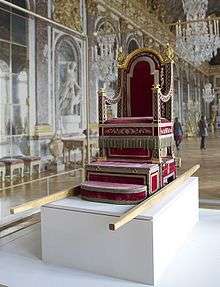

Riveted chair?
"Haircloth is a stiff, unsupple fabric typically made from horsehair and/or from the wooly hair of a camel. Although horsehair generally refers to the hair of a horse's mane or tail, haircloth itself is sometimes called horsehair. Horse or camel hair woven into haircloth may be fashioned into clothing or upholstery."
Ship of the desert.
Something extra: "When I began working with the unconscious, I found myself much involved with the figures Salome and Elijah. Then they receded, but after about two years they reappeared...They were completely unchanged....'spoke' and acted as if nothing had happened in the meanwhile....when in fact incredible things had happened in my life. I had to 'explain' all that had happened from the beginning.....Only later did I understand what had happened: in the interval the two had sunk back into the unconscious and into 'themselves' - I might equally say - into timelessness. They remained out of contact with ego's changing circumstances....[Page 337 'Memories, Dreams and Reflections' / C. G. Jung].
Another aspect of ''Duality''? i.e.,time/timelessness....as a means...?
And/or: ''I had another experience of the evolution of the soul after death when - about a year after my wife's death - I suddenly awoke one night and knew that I had been with her in the south of France, in Provence....She was engaged in studies of the Grail there...." [Page 341 same book].

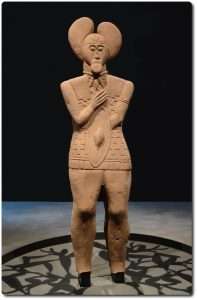
Waiting for what? Date with Venus?
And/or: Stepping into the cool darkness of the church at Saintes-Maries-dela-Mer from the bright clear sunlight of Provence is to step back into another age, an age of faith that was at least superficially Christian but actually illuminated, from within as it were, by the antiquity of its goddess worship. Under the chancel, a flight of stairs leads down to the crypt, where King René found the bones of Sarah and the two Marys. Blackened by the candles of myriad pilgrims, most of them Gypsies who come to pray before the statue of Sarah, the crypt envelops the visitor with an atmosphere of dark and earthy mystery. If this is Christianity, it’s far different from its more orthodox varieties. Here, the feminine is not excluded; it is worshipped in a manner that is far more primitive than early Christianity itself. This impression is heightened during the Féte of May, when the Gypsy guardians gather to honor Saint Sarah and the two Marys. 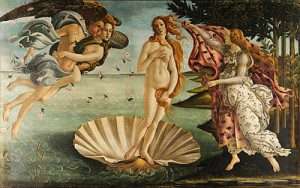 For several days prior to the festival on May twentyfour and twentyfive, Gypsies from all over Provence, southern France, and northern Italy pour into Les Saintes-Maries-de-la-Mer, some still in their colorful horse-drawn caravans. The guardians, those who will carry the relics in the festival, make an all-night vigil at Saint Trophime, then travel in a procession with twelve young girls in white, the virgins of Arles, to the church at Saintes-Maries-de-la-Mer. The three-day festival begins with the guardians taking down the reliquaries of the two Marys from their chapel above the chancel. The relics are left on display, while the statue of Sarah is brought up from the crypt, draped in many rich cloaks, and paraded down to the sea.
For several days prior to the festival on May twentyfour and twentyfive, Gypsies from all over Provence, southern France, and northern Italy pour into Les Saintes-Maries-de-la-Mer, some still in their colorful horse-drawn caravans. The guardians, those who will carry the relics in the festival, make an all-night vigil at Saint Trophime, then travel in a procession with twelve young girls in white, the virgins of Arles, to the church at Saintes-Maries-de-la-Mer. The three-day festival begins with the guardians taking down the reliquaries of the two Marys from their chapel above the chancel. The relics are left on display, while the statue of Sarah is brought up from the crypt, draped in many rich cloaks, and paraded down to the sea.
Purple?

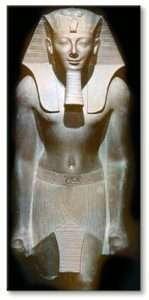
Happy or sad?
That link to Southern France,'Occitania', from where the 'benefit' of Gnosis began its European odyssey. 'Occitania' being the language of 'Oc'. Where 'oc' means 'yes', [Chapter two, 'The Master Game']. Ask the right question [internally] you may get the right answer.
And/or: ''This question has many different sides {key} to it''? Taken from the book 'In Search of the Miraculous'. Follow the title of the book to 'see' it from ALL sides.
Hermetic equivalent..."Fusion, inner unity, is obtained by means of 'friction', by the struggle between 'yes' and 'no' in man. If a man lives without inner struggle; if everything happens to him without opposition; if he goes wherever he is drawn or wherever the wind blows, he will remain such as he is. But if a struggle begins in him, and particularly if there is a definite line in this struggle, then, gradually, permanent traits begin to form themselves, he begins to 'crystallise'. Crystallisation is possible on any foundations." [Extract from the book by Tomberg. 'Letter Xiii' ]. Link to ''Temple'' symbolism. For a deeper 'read' try ''wrestle'' in the usual box.
''Line of sight'' in relation to 'crystal clear'. As a means.....

"The chariot or car might be considered indeed a moving equivalent of the Throne of God." [From the book by G. Knight]. Question. Base = ''Footstool''?
"But i say to you; 'swear' not at all, neither by heaven; for it is gods throne: nor by the earth, for it is his footstool: neither by Jerusalem, for it is the city of the great King. Neither shall thy swear by thy 'head', because thy cannot make one hair white or black; but let your communication be yes or no..." [Matthew 34-37]. i.e., 'higher' within the 'lower' and 'lower' within the 'higher'. Representational of. But only understood because of those keys - link to ''gnosis'' - its intent and purpose.
Something hinted at: "Your code for yes and no, or positive and negative, is a way in which the inner you can make a simple communication with the outer self. The inner you has a great many more senses {'six'?} than the outer five..." [Page 79 'Magic for the Aquarian Age' / M. Green].
And/or {i.e., from a different perspective}: "In my work Sakti and Sakta I outlined for the first time the principles of Kundalini Yoga so much discussed in some quarters, but of which so little was known. This work is a description and explanation of the Serpent Power, and the Yoga effected through it...It consists of a translation of two Sanskrit works...The first entitled ''Satcakra-nirupana'' {i.e., Description of and Investigation Into the Six Bodily Centers}….The second text, called ''Paduka-Pancaka'' {Five-Fold Footstool of the Guru} deals with one of the 'Lotuses' described...." [Page ix/x 'The Serpent Power' / J. Woodroffe].
'Eleven'?
Side note: {Egyptian equivalent of ''footstool''?}: "I am your pallet and I even brought you the inkpot as well. I am not among those with hidden unrighteousness. There is no wrong doing within me." [Chapter 8 'Egyptian Book of the Dead' / M. Ashby. {Page 200}].
The above paragraph entitled ''A conversation between Asar {Osiris} and Atum. In the metaphysical sense of the word - for an understanding to take place within the readers frame of reference, i.e., one of the above aspects relate more to 'lower' the other 'higher'. Understanding what ALL cultures regardless of time or space infer about that universal ''bit'' gives all readers - sooner or later - a chance to ''center in'' on subject material in ALL its aspects and therefore manifestations.
Try ''Labyrinths''.
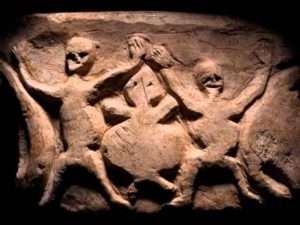
Hints? Try ''tortoise'' or would that be ''turtle''?
Continued: "It is therefore impossible for a scholar to possess knowledge of these problems, whether it be through his own researches or through his 'masters' teaching - without communicating part of that knowledge to others. This cannot be done in clear words; it must be done sparingly by way of hints. We find in the words of some of our Sages numerous hints and notes of this kind, but mixed up with words of others and with other subjects. In treating of these mysteries, as a rule, I quote as much as contains the principle idea, and leave the rest for those who are worthy of it." [Page 211 'Guide for the Perplexed' / Moses Maimonides].
Same principles - different culture...Copán Altar Q - Wikipedia:
"Each of the sixteen leaders of Copan are shown with a full body portrait, four on each side of the monument {i.e.,Altar Q}. It starts with Yax K'uk Mo who ruled starting in 426 AD, and extends through 763 AD, ending with... Therefore, the monument's depictions span three hundred and fifty years of time. Each ruler is seated on a glyph that represents his name, except for the dynastic founder Yax K'uk Mo', who is seated on the glyph for "lord", and whose name is given in his headdress." [Wiki/Altar Q].

The Sixteen.
Analogy? ''According to the verses in Ezekiel and its attendant commentaries, the Merkaba consists of a chariot made of many angels being driven by the "Likeness of a Man." Four angels form the basic structure of the chariot. These angels are called the "Chayot" (lit. "living creatures"). Their bodies are like that of a human being, but each of them has four faces, corresponding to the four directions the chariot can go (north, east, south, and west). The faces are of a man, a lion, an ox (later changed to a child or cherub) and an eagle. Since there are four angels and each has four faces, there are a total of sixteen faces."
And/or: ''The Sixteensome Reel is a Scottish dance.''
"Got to see it, rather than just read it..." John Humphrys talking to D. Tennant and Greg Doran in relation to the plays by W. Shakespeare. [400th anniversary. Radio 4. 23/04/16].
Question. If ''throne'' is represented with 'West' - what would ''Lord'' be represented by? And why?
Question 2. Why represent anything at all?
Or the words verily, verily, [ New testament. Or Sura six of the Qu-ran]. Or the book ‘Daughter of fire’. By I. Tweedie. First European woman to understand the ‘eastern way’ with her 'relationship' with a ‘guru’. Would only recommend to read it once a general knowledge of the overall subject is understood. Otherwise it will...as it did with this reader...probably ‘bore the pants of you’, [ no pun intended ], if its read before you get that general overview of the subject. In other words this subjects 'framework' gives a certain credible logic even to something that seems on first impressions, unusual; if only from a novice point of view; as in the above example, i.e., a 'relationship' and or 'connectedness' between two individuals.

Back {'flat'} of the head as a start point?
The woman in question was in her fifties and was already acquainted with esoteric literature, in general. There are however ‘nuggets’ to be found...but far easier to be found later...when the reader has an idea of what he/she is ‘looking’ for. The above example used mainly because of another book and its purpose to the reader by another author..."The Illicit Happiness of Other People'. By Manu Joseph. A novel about the dangers to the 'unwary' in relation to this subject. Or more specifically...by way of a guru.
Supposedly based [in novel form only] on actual events/experiences within his homeland of India. That guru relationship with the 'student' being specific to that culture. A specialist subject. [Explained within. Positive example of same...'Apprentice to a Himalayan Master'. By Sri M. ]

Team player or just a specialist one?
The author using adolescences as examples within that 'danger'. Curiosity getting the better of their 'reasoning' abilities. No mention however of the subjects possible positive potential. An example of someone focused solely on his own point of view. Even with parental discipline curiosity can to some, overcome those basic instincts. As it can do with anyone under a certain age. Those 'specialist' subjects however are only allowed to be 'shared' by individuals over a certain age. That 'allowable' age; whether the author is aware of it or not; exceeds -in all cases- the ages of the characters used as 'examples' in his book. Understanding this subjects general framework however provides that 'safety net'. As it does in any subject [Lower keys of Solomon].

Team players or just the Old Boy network?
That Guru 'relationship' being a specialist subject within Esotericism. Just as shamanism is to tribal/indigenous cultures or the ‘western way ‘ is to certain 'mystery' clubs. [Explained elsewhere. 'Higher' Keys]. Or monks/nuns are to the monastic side. With the Hebrews its the Serifoth tree. Same ‘principles’ as in the ‘mountain’ at Gobekli-tepe or the ‘monuments’ at Giza...but now expressed in the form of a ‘Tree’.
"What is understood intellectually through books and study can be experienced directly through Siddha Yoga." [Chapter 24, 'Play of Consciousness']. Question. What does that statement imply? Think about it, in relation to ''archetypes.'' Creation of, as a means to an understanding.
Fishers of men?
 A side step: "As we have seen, harmonica represents the fitting together of extremes via the principle of logos [ explained within] or proportion. While there are several types of proportion, according to the Pythagoreans the most perfect form is continued geometrical proportion, because each term in the proportion is related to the next term through the same, continuous ratio. As Plato notes in Timaeus, 'two things alone cannot be satisfactory united without a third....' For example, in the proportion A:B:C, A is to B in exactly the same ratio as B is to C. In this proportion, the middle term B is the so called geometrical mean, the point of mediation between A and C. The mathematical formula for finding the Geometrical Mean between any two numbers is a simple one. Take the two extremes, multiply them together, and find their square root......." [Chapter 4, 'Jesus Christ Sun of God:Ancient Cosmology and Early Christian Symbolism]. To understand what this reader is implying; swap the word ''mediation'' for 'meditation.' Understanding what ALL cultures imply by the ''divine'' word gives a possible [even if- by way of those first impressions- an incredulous one], answer to that question, in relation to 'archetypes.'
A side step: "As we have seen, harmonica represents the fitting together of extremes via the principle of logos [ explained within] or proportion. While there are several types of proportion, according to the Pythagoreans the most perfect form is continued geometrical proportion, because each term in the proportion is related to the next term through the same, continuous ratio. As Plato notes in Timaeus, 'two things alone cannot be satisfactory united without a third....' For example, in the proportion A:B:C, A is to B in exactly the same ratio as B is to C. In this proportion, the middle term B is the so called geometrical mean, the point of mediation between A and C. The mathematical formula for finding the Geometrical Mean between any two numbers is a simple one. Take the two extremes, multiply them together, and find their square root......." [Chapter 4, 'Jesus Christ Sun of God:Ancient Cosmology and Early Christian Symbolism]. To understand what this reader is implying; swap the word ''mediation'' for 'meditation.' Understanding what ALL cultures imply by the ''divine'' word gives a possible [even if- by way of those first impressions- an incredulous one], answer to that question, in relation to 'archetypes.'
''...two extremes'' in relation to ''square root'' = an understanding of 'opposite ends of the same pole' and/or the 'tail end of something begins...'
 "The Mysteries taught that the first step of meditation as being 'to see God made manifest in Nature'. If you do not like the word god, change it to whatever that same word means to you. In nearly all the great religions there is the idea of an indwelling spirit of the divine being seen in the visible universe." [Chapter 4,' The Forgotten Mage' by C. Seymour.
"The Mysteries taught that the first step of meditation as being 'to see God made manifest in Nature'. If you do not like the word god, change it to whatever that same word means to you. In nearly all the great religions there is the idea of an indwelling spirit of the divine being seen in the visible universe." [Chapter 4,' The Forgotten Mage' by C. Seymour.
Analogy of same..."Every meditation tradition begins with daily practice that helps to focus a scattered mind. The most common way to start is by focusing on a single object [or subject. This readers input] that is always with you - in this case - the movement of the breath in the body. Why the breath? Firstly the breath is something that you probably take for granted despite the fact that you cannot live without it. You can live without food for weeks, without water for days, but you cannot survive without the nourishment that the breath provides for more than a few tens of seconds. The breath really is life. Secondly, there is an important way in which the breath does not need us to make it happen. The breath, breaths itself. If it was up to us to remember to breath, we'd have forgotten long ago. So tuning into the breath can be an important antidote to the natural tendency towards believing that we have to be in control. Attending to the breath reminds us that at the core of our being, something is happening that depends very little on who we are or what we want to achieve..." [Chapter 5, 'Mindfulness'. Mentioned elsewhere].

When the north wind {or Banksy?}- blows?
Understanding that universal framework from the dawn of human [understanding?] gives that paragraph a deeper meaning, i.e.,it could explain ''meditations'' origins, i.e.,''to focus a scattered mind''- this subject defines that same principle [chaos?] with the 'wind' especially the Northern one - no better representation - than Woden; 'lord' of the winds. Had the use of only one eye. Similar to Hades. Top/down relative to bottom/up - in relation to making something understood. Turbulence in the 'air' as opposed to the 'seas'. A focal point needed to take it a step further. What this subject defines as ''Guardian of the Gate.'' Hence the link to objectivity and its 'help' in defining both concepts; whether above or below - as a start point to understanding something [anything] further. 'Meditation' its main aid. The symbol of which is - a waveless lake - ''where still waters run deep.''
'On Having No Head: Zen and the Rediscovery of the Obvious' / D. E. Harding.
Side note: "...among the blind it is the one eyed who is the King." [Quote from within the book by Douglas Monroe].
Continued: A working example: "Gurdjieff essentially synthesized ancient esoteric teachings and made them approachable and applicable to the lives of rational Western individuals. A seeker will find in his teachings an immeasurable treasure, the essence of so many other teachings, both spiritual and psychological, on the inner life. This extraordinary system of thought, which ranges from the most intimate, psychological insights to a grandiose cosmology linking the individual with the universe, is a synthesis of practices and teachings known as the 4th Way. It is named the 4th Way to differentiate it from other ways of conscious evolution: the Way of the Monk, the Way of the Fakir, the Way of the Yogi {and/or ANY OTHER WAY including the Way of the READER - this readers input}." ['The Wisdom of the 4th Way' / T. Nottingham]. Continued elsewhere.


Sycamore or Pine?
"Let us sit here a few minutes. My master asked me to meditate whenever i saw an expanse of water. Here its placidity reminds us of the vast calmness of god. As all things can be reflected in water, so the whole universe is mirrored in the lake of the ''cosmic mind''. So my guru often said." [Extract from the book 'Autobiography of a Yogi'. Mentioned elsewhere].
Question. Nothing more than an aid to meditation?
"The comparison of the psyche to a mirror which reflects an image OF the light, representing 'god consciousness', is an important Gnostic metaphor. The Gospel of Philip teaches: 'You can't see yourself in water or a mirror without light. Nor again will you be able to see yourself with light but no water or mirror. Therefore it is right to baptize with both water and light. But the light is the anointing. The psychic stage of initiation - the baptism of water - can be imagined as process of stilling the waters, or cleaning the mirror of psyche, or removing the veil of illusion, to reflect the light perfectly..." [From the book by T. Freke and P. Gandy].
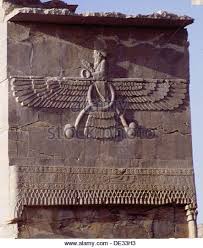 And/or: "However, it's thanks to this duality that a being can recognise himself...This consciousness becomes the mirror through which he can recognise himself...Man is the only one who possess the power to mentally project this innate consciousness outside of himself...This observation, because it is reflected, is 'dual', and makes one aware of one's consciousness: self consciousness is the first step on the way toward the return of Unity." ['Journey into the Light'].
And/or: "However, it's thanks to this duality that a being can recognise himself...This consciousness becomes the mirror through which he can recognise himself...Man is the only one who possess the power to mentally project this innate consciousness outside of himself...This observation, because it is reflected, is 'dual', and makes one aware of one's consciousness: self consciousness is the first step on the way toward the return of Unity." ['Journey into the Light'].
Objective view?
Exercise: Use that 'process' to define those ''dualities'' i.e., dark/light and/or death/rebirth and/or crystalize/UNcrystalize and/or embossed/debossed and/or Redeemed/Unredeemed and/or sea's/river's and especially Square/round REPRESENTED as 'cross'/'circle' - ALL AS A MEANS....?
'On Having No Head: Zen and the Rediscovery of the Obvious' / D. E. Harding.
N.B. Notice also how [in the main] its always the Northern countries [cold] whose mythology primary includes ''winds'' whereas the warmer climates i.e.,Greece - primary include ''seas''. Coincidence or a meaningful one? Or simply environmental, i.e.,

It was the 'wall' that made him. Will it be the wall that breaks him?
"And so to the songs themselves. Geographically the examples examined range from the far West of Cornwall through the whole peninsula of South-west England.
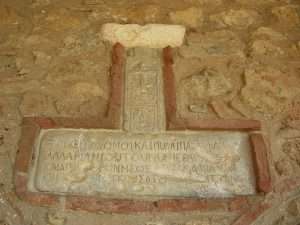
Twice as broad than long? Birket Habu?
One or two songs are drawn from counties bordering this region such as Gloucestershire, and from Wiltshire and the White Horse area where counties meet...To draw upon West Country songs is, in effect, to draw upon local variants of British songs, but their particular value lies in their link with ancient ritual practices, a link shown in the symbolism of the songs themselves and their music. A similar treatment of Eastern and North-eastern English songs would probably show a certain amount of Norse influence, but the level of symbolism found in these songs in general is deeper than that of specific religions and cults, and points to the overall pattern of images behind all 'magical' and religious thinking...Lore of this sort never opens broad and easy paths of thought, but after innumerable meanderings and branching's, leads to a simple pattern of ritual and 'mystical' concepts, where the various separate routes merge together." [Taken from within the book 'Where is Saint George'. Enlarged elsewhere].
Recall C. Jung's quote in the 'Help' section.
And/or Delta? OR...
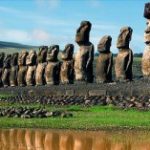
Inward or Outward?
''One road leads inwards, to the maze at the heart of our inner castle, the other road, scattered with jewels and the remains of burnt out failures, leads to the world of every day toil and achievement. You are standing at that crossroads, and guided by whatever steps you may have already taken on both of those ways, now you may go forward on your chosen path.'' [Final paragraph 'The Path Through the Labyrinth' / M. Green].
Upstream or Downstream?
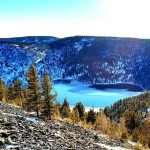
Emblem?
Side step: "Its the first public art in Britain - a large horse on an Oxfordshire hillside 3000 years ago. The hill - a border crossing - it was hotly contested {by at least three tribes}. Hill figures found no where else in Europe. This one marks a key moment in the development of British identity...The people who lived here were marking their lands with a tribal emblem / logo..." ['Seven Ages of Britain' . Mentioned elsewhere]. Coincidence or a meaningful one beyond ''marking their lands with a logo''?
Question. Which came first - boundary definitions and/or chalk figure. And why a 'horse'? = Subject material?
Side note: The decans are endowed with a great divine virtue and with a peculiar puissance: everything happens by their degree. All things fortunate and unfortunate.'' [Pages 157/8 'Sacred Science' / R. A. de Lubicz].
3:8 to enlarge.
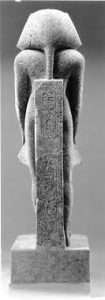
Old/New. Which and why?

Opening of the 'mouth'?
''The whole of Britain is full of traces of white horses....Why do the Continental representations of Epona show her with a KEY in her hand?" [Pages 96/7 'GogMagog' / T. Lethbridge].
'Female' aspect?
''A horse's teeth grow with age, and the length of the front teeth is often used as an indicator of equine age. Thus 'long in the tooth' equates to old age.''
Nestor from Pylos and Auriga to enlarge.
''In Gallo-Roman religion, Epona was a protector of horses, ponies, donkeys, and mules. She was particularly a goddess of fertility, as shown by her attributes of a patera, cornucopia, ears of grain and the presence of foals in some sculptures. She and her horses might also have been leaders of the soul in the after-life ride, with parallels in Rhiannon of the Mabinogion. The worship of Epona, "the sole Celtic divinity ultimately worshipped in Rome itself", was widespread in the Roman Empire between the first and third centuries AD; this is unusual for a Celtic deity, most of whom were associated with specific localities.'' [Wiki]. Try ''chariot''.
Put those keys together to attempt a MIND SET. While recalling the {attributes?} and such {concepts?} of same - in relation - to ''sound''.

Heart?
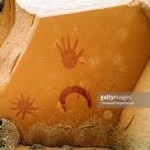 Side note: Somewhat surprisingly, the story of the Pilgrims Way commences neither at Winchester...nor from its final destination of Canterbury. Instead it begins a few miles south of Canterbury - at the channel coast near Dover. And it is a story, the heart of which is inextricably linked to chalk {Egyptian 'limestone'?}...It is chalk that serves to remind us that throughout much of human history, Kent's physical connection to the continental land mass was not by water but by chalk. A great swathe of chalk downland that had once linked Britain with the European continental land mass. The very same chalk from which is derived the earliest name given to Britain: Albion, meaning 'white'...The straits are but a narrow breach in the chalk...It is at this most easterly point, where the huge mass of the North Downs is exposed in cross section as the majestic White Cliffs that the escarpment begins its journey... 'A sweeping arc leading through from the channel coast to the heartland of southern Britain'... The great glory of the North Downs is its escarpment which faces south into the sun, UNLIKE the corresponding escarpment of the South Downs, and in consequence, a kind of ''inland Riviera'' prevails, where, it is sheltered by the undercliff....Margery was bold enough to assert that the trackway was one of the most important in Britain....possibly using it before the separation of the Island occurred. For this reason alone the Pilgrims Way rightly merits the opening lines that Belloc bestowed on it: 'Of all these primal things the least obvious but the most important is The Road'..." [Pages 19/21/24/134 'The Pilgrims Way / D. Bright].
Side note: Somewhat surprisingly, the story of the Pilgrims Way commences neither at Winchester...nor from its final destination of Canterbury. Instead it begins a few miles south of Canterbury - at the channel coast near Dover. And it is a story, the heart of which is inextricably linked to chalk {Egyptian 'limestone'?}...It is chalk that serves to remind us that throughout much of human history, Kent's physical connection to the continental land mass was not by water but by chalk. A great swathe of chalk downland that had once linked Britain with the European continental land mass. The very same chalk from which is derived the earliest name given to Britain: Albion, meaning 'white'...The straits are but a narrow breach in the chalk...It is at this most easterly point, where the huge mass of the North Downs is exposed in cross section as the majestic White Cliffs that the escarpment begins its journey... 'A sweeping arc leading through from the channel coast to the heartland of southern Britain'... The great glory of the North Downs is its escarpment which faces south into the sun, UNLIKE the corresponding escarpment of the South Downs, and in consequence, a kind of ''inland Riviera'' prevails, where, it is sheltered by the undercliff....Margery was bold enough to assert that the trackway was one of the most important in Britain....possibly using it before the separation of the Island occurred. For this reason alone the Pilgrims Way rightly merits the opening lines that Belloc bestowed on it: 'Of all these primal things the least obvious but the most important is The Road'..." [Pages 19/21/24/134 'The Pilgrims Way / D. Bright].
The Road least travelled? Eye of the needle parlance?
Try the title of book or author to see its universal 'pathways'.
 Continued: "The relation between body and soul, and all together between the spirit of things and their corporeality, may be expressed by the example of a rider on horse back. A rider who is in control and guides his steed can go much further than he can go on foot. How aptly then does the image of the Messiah..." continued elsewhere.
Continued: "The relation between body and soul, and all together between the spirit of things and their corporeality, may be expressed by the example of a rider on horse back. A rider who is in control and guides his steed can go much further than he can go on foot. How aptly then does the image of the Messiah..." continued elsewhere.
'Saturn, Chiron and the Centaurs: To the Edge and Beyond' / M. Reinhart.
"The horse is secondary to the rider, the rider is not subservient to the horse; this is meant by 'Thou wilt ride upon thy horses' {Hab.iii.8}." [Page 106 'Guide for the Perplexed'].
Follow the title of the book to understand {'see'} a text that is described {on its back cover} as ''one of the greatest philosophic works of all time.''
"If any man offend not in word, the same is a perfect man, and able also to bridle the whole body."....''As soon as the tongue begins to speak for its own pleasure, it runs on in speech like an unbridled horse, and blurts out not only the good but also...." {James iii 2/8}.

''Twelve-_Lords_a_Leaping.'' Or is it ten?
REFRESHER: ''The decans are endowed with a great divine virtue and with a peculiar puissance: everything happens by their degree. All things fortunate and unfortunate.'' [Pages 157/8 'Sacred Science' / R. A. de Lubicz].
PUISSANCE: [ˈpjuːɪs(ə)nsˈpwiːɪs(ə)nsˈpwɪs(ə)ns]
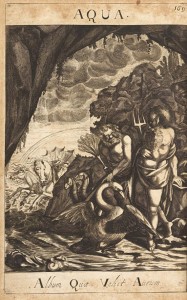
'Heralds the advent of the sun'. Any 'keys' ?
And/or: "You know that the word cabala comes from the word for horse, and that the banners of the knights were hermetic emblems. The heraldic colours and symbols were the expression of the degree of knowledge and of individual qualities specific to the particular nature of the knight. The horse was a part of the horseman, considered in his animal humanity, but the armour and the emblem represented the qualities of the noble being who was to mount and surmount the animal. That's why it is not humiliating for the horse to serve as a mount for man. The symbolism of the ancients places the horse in relationship to the vertebrae of man, which carry the 'fire' of the marrow - which terminates with a frayed end called the 'horses tail'...''Does that mean that the horse is a symbol of fire,'' asked Jean Jacques. ''It is also the animal of Poseidon,'' answered Dominique. ''Think of the horses of Neptune. Moreover, you know that the horse is born in...
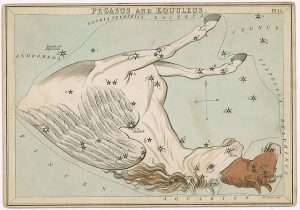
A ''quarter'' of something. 'Ploughshare'?
….water because the mother brings it into the world enveloped in apocket filled with water...We can learn from the horse that which our mind has stifled in us: the instinct for danger. This instinct allows it to feel the mood of the horseman...They also have mental faculties, and a remarkable memory, too...These faculties are still part of the 'automaton' and our mortal brain...But tonight we are here to observe..." ['Journey Into The Light' / Isha Schwaller de Lubicz]. Try ''Cabala'' and/or ''fire'' and/or ''tail of a horse'' and/or ''twins'' and/or ''knights templar'' etc. All as a means...?
The 'Horseman's Word' ?
Question. ''Fire'' in relation to 'trident'? i.e., metal of the mind? {'Mars' ?}.
'Fire of {in?} the heart'? = ?
As one example: "Equally, with the Sun in Libra, the individual is unlikely to have difficulty expressing the qualities of Venus or Saturn. The challenge for the 'Sun' in Libra, however, will be the conscious integration of the qualities of 'Mars' and the 'Sun'...If this can be achieved, the Libra Sun individual will have found their 'metal' {Mars} for the greater good {Libra} and to fight {Mars} for what they value {Venus}..." [Page 110, 'Mapping the Psyche' / vol. 1].
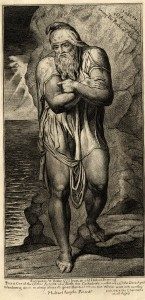
Anchor point?

Council flag: Isle of Wight. 'Place of division'. Heading north for a re-union?
A side step: "Fourthly, the breath can be a sensitive monitor for your feeling. If you can sense more clearly when the breath is short or long, shallow or deep, rough or smooth, you can begin sensing your own internal weather patterns, and choose whether and how to take skilful action to look after yourself. Finally, the breath provides an anchor for your attention, so that you can see more clearly when your mind has wandered, when it is bored or restless or when you are fearful or sad..." [Same book].
Try ''breath'' in the usual box; then try ''anchor''. Question. Does the author of the same book have an awareness of this subject? If not - synchronistic link? OR vise versa? In other words - which came first and why.
''The mind is more like a butterfly, to be caught in a gossamer web {'net'?} rather than a hard steel trap.'' [Page 130 'The Path Through the Labyrinth' / M. Green].
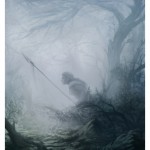 Those images [ symbols/archetypes?] that seem to be universal to all, i.e.,"For some reason Hannah persisted with the practice twice a day. She found that there were some times when it felt as if a storm was raging. At other times, she found her mind wasn't so busy. Then, on the third day of her practice, something new happened. She began to think of her mind, its thoughts and its feelings, as a weather pattern, with her task simply being to observe the weather, even if it was stormy. At other times, she found it helpful to think of her mind as a lake, sometimes whipped up by winds, at other times quite still, so that it could reflect all the landscape around it. Hannah was not trying to gain control over the 'weather'. Rather, she was becoming more interested in it, observing storms and the ensuing periods of tranquillity with curiosity, but without self criticism.....
Those images [ symbols/archetypes?] that seem to be universal to all, i.e.,"For some reason Hannah persisted with the practice twice a day. She found that there were some times when it felt as if a storm was raging. At other times, she found her mind wasn't so busy. Then, on the third day of her practice, something new happened. She began to think of her mind, its thoughts and its feelings, as a weather pattern, with her task simply being to observe the weather, even if it was stormy. At other times, she found it helpful to think of her mind as a lake, sometimes whipped up by winds, at other times quite still, so that it could reflect all the landscape around it. Hannah was not trying to gain control over the 'weather'. Rather, she was becoming more interested in it, observing storms and the ensuing periods of tranquillity with curiosity, but without self criticism.....

Twice as broad than long? Birket Habu?
She was slowly becoming aware of her thoughts as thoughts and the inner workings of her mind as passing mental events. Seeing her mind as a lake, Hannah saw how often it had become disturbed by a passing storm. Then she said, 'the water becomes murky and full of sediment. But if i am patient, i can see the lake in all its beauty gradually becoming clear again'..." [Chapter 5, same book. Parenthesis - this readers]. OR Is this subject nothing more than a description of ''images'' brought about by meditation?
'The winds of inflation and the storm of deflation.' in relation to The Island of Aeolus. [Page 158 'The Hero and the Goddess: The Odysseus as a Pathway to Personal Transformation' / J. Houston].
As 'seen' from a different perspective: "Note also the saying of our Sages: 'When the universe was created, all things were created with size, intellect, and beauty fully developed, i.e.,everything was created perfect in magnitude and form, and endowed with the most suitable properties; the word zibyonam {their beauty} used here has the same meaning as zebi ''glory'' {Ezek.xx.6}. Note this likewise, for it includes a principle fully established." [Page 216 'Guide for the Perplexed']. Manifested?
Something to ponder on: Beauty/ Glory {grace} and 'lake'. Connect those three to ''establish'' a final resting place.

'Fire' and 'ice'?

Bleeding Mother Russia dry? Team player?
A{working?} example: "A number of images are used to describe meteor showers in the Iliad. They include the 'tears' of Agamemnon in Leo, Glaucus 'bleeding' arm in Gemini, Hectors 'flashing helmet' {''the warrior who glitters like a snowy mountain''} in Orion, the 'flowing words' of Nestor in Auriga, and the following quotations about Odysseus: 'When he raised his voice, and the words came driving from his deep chest like winter snow before the wind...no man thought further of what he looked like'. This simile indicates a meteor shower in the region of the Quadrantids close to the 'head' of Bootes and which, like winter snow, can be seen in January." ['Homer's Secret Iliad']. Why 'snow'?
N.B. Janus = January.
"Stephen Fry, once wrote to me: 'All i can say is that mood is like weather - completely real but guaranteed to change." [Extract from the book by Q. S. Lam]. Enlarged elsewhere.
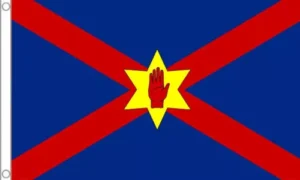
Flag of Ulster.
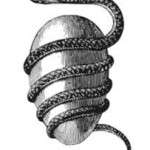
Inner/outer. A beginning or end?
Side note: "Glimmering / Glitter" in relation to: Olympus was ordered and balanced with its six gods (Zeus, Apollo, Hermes, Hephaistos, Ares and Poseidon) and six goddesses (Hestia, Hera, Demeter, Artemis, Athene and Aphrodite). There is a clarity and decisiveness about the actions of the Olympians. The creepiness of their chthonic counterparts is much diminished when Hades is made Lord of the underworld. Jane Harrison argues that the Olympian order radically de-potentised the ancient earth-spirits; that this new shining order dried out the depth and range of feeling tone represented by the old serpent of the Earth, especially when shown in the new role as bearded, and hence masculine, as an underworld Zeus; where the primeval feminine snake loses her slipperiness and terror. Clarity then becomes an Enemy - even the gods and goddesses get too clever, too slick. Feeling tone and the rough edge must be regained, as a Personal Power, indicating depth and range of feeling. ['Fruits of the Moon Tree'].
Dionysos to enlarge.
Continued: The Druids. Another culture whose ‘knowledge’ was represented ‘within’...trees/herbs/plants...but this time the bottom/up [ 'Wet' way], i.e., More often than not using the 'unconscious’ as representation of a ‘start’ point. In relation to the beginnings of an eventual understanding of something, [with the participant or reader in mind]. As opposed to the Hebrew top/down,[ 'Dry' way ] i.e., As a representation of a ‘Conscious’ or 'known' start point. As indicated in such books as ’The white goddess. By R. Graves, [Tree symbolism information ] Or ‘Discovering the folklore of plants’. By M. Baker. Example of the 'dry', could be 'Jewish Meditation' [a practical guide] by A. Kaplan. Think about it, relative to the framework of the Hebrew 'tree'.
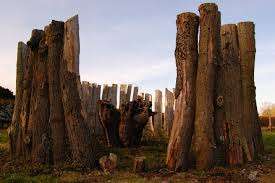
Oak logs, rough on the outside, smooth on the inner. Inverted Oak stump in the middle. Neolithic {micro} equivalent = Quern stone. Indicative of a return to something. On Oak Island were discovered Oak logs together with a flat stone [ Olive in colour ] at regular intervals, in the form of a Well shaft. Indicative of the start of something. Clue. Olive in relation to the sacred foods that were used to consecrate the beginnings of something. Oil one of those 'foods'. The others, butter, milk, and honey. All found within.
Together with the book ’Sea henge’. By F. Pryor. Another pagan equivalent of that same ‘tree’ symbolism but now shown in-situ [ Time team ]...in its physical state, i.e., upside down, [ bottom/up ] i.e., The return journey. Symbolic of...by way of, that ‘inner' landscape /understanding, i.e., later development of ‘Altar’ = Tree stump. [Chapter two. ’Quest for the Celtic Keys’. Mentioned elsewhere].
"...the symbol of the lower will is the Altar." [Quote from within the book by I. Regardie]. Question. What is this subjects symbol for 'higher'?
Analogy {i.e.,as seen from a different perspective}: "You need five lights because traditionary you always have one in the center of the altar to represent the Light of the Universe, or the spark of god at the center of your working, and one candle at each point of the compass." [ 'Magic in the Aquarian Age' / Marian Green].
Compass of the Heart?
''The inner guardian is our true North, the keeper of the charts.'' Try 'map' / 'whale'.
''Guardian of the gate''?
Question. The ''gate'' of what?
And/or: ''Compass'' in relation to 'encompass' / 'compassion'?
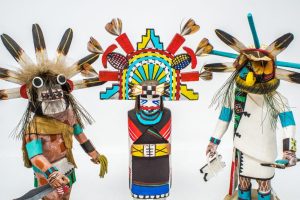
''One of the connotations of the word 'katsina' is - 'one who listens'. [Page 163 'The Orion Zone' / G. A. David].

'Watcher' = Little girl. Herald = Mayor/Storekeeper. Gatekeeper = Banjo player?
Side note: Something to ponder on: "Each 'region' has a gate, and each gate has three 'attendants', a watcher, a herald and a gatekeeper. As an aspiring soul approaches the gate, the watcher takes notice, the herald announces that persons 'name', and if that person knows the 'higher' mystical truth {by way of keys/correspondences etc} - the gatekeeper allows entry. This teaching degraded in later times to the point where people began to think that just by memorizing certain names they would be allowed access. Rather one must know the 'higher' truth which unites one with the dweller {of the threshold?} within the abode of the 'house'....{I.e., in the internal sense of the word}.

'Giant' = Dweller on the Threshold.
Hence: "Each aspect should be seen NOT as independent personalities but as aspects of one, having the sense of sight, speech and organs of 'action' {i.e., 'hands' to open the 'gate'}…..

Thumb?
The Watcher is that aspect which 'sees' and takes notice, the witness. The Herald is the aspect of acknowledging what has been seen. The Gatekeeper is the element which is 'seen' and which needs to be satisfied that the aspirant is worthy of 'gaining entry'...." [Pages 231/2 'Egyptian Book of the Dead' / M. Ashby. All emphasis, this readers].
Continued: Other key words within same book. [Sea Henge ]...’East coast’ = The start of something. ’Dykes’ = link to ‘groove’ symbolism. ‘Fengate’ = Borderline/shoreline between ‘wet/dry’ land. ‘Ely Cathedral’ = ‘Ship’ of the fen. ’Peddars way’ { Icknield Way } = The beginnings of a journey. [ All explained elsewhere...and all within one landscape].
The quern stone another example of that ‘return journey’. Representation of. [explained elsewhere].
"Each track is bound up in myth, mystery and legend. Whats the truth behind all these megaliths, and burial sites, ley lines, hidden caves all along these pathways; and why were these mystic origins such an attraction to later generations. I'm going to explore these tracks - to connect the clues they left behind in the British landscape. The Icknield Way - no one has a clue what it means. Some say from the word ''Iceni'' - others from the ancient word ''oxen'' - the Oxen Way. But what i love, is the fact that we have this roadway snaking through all these counties, but at its heart is a mystery that none of us can decode." [ Quote from the narrator of 'Britains Ancient Tracks']. Enlarged elsewhere. Try ''oxen''.
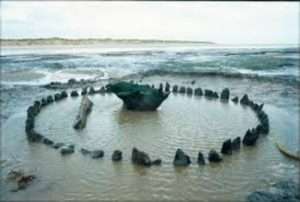
Wooden map?
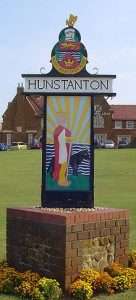
"Faces west across The Wash, making it one of a few places along the East coast where the sun can be seen to set across the sea." - It also marks the beginning {east?} of the Peddars Way. Enlarged throughout. ''Line of sight''? Try ''Sirius'' in relation to ''Syria'' - as a means...?
The Icknield Way - that follows a chalk line. Why. What does 'chalk' represent. If only within this subject? Question. Which came first. Subject material or landscape ?
That inverted stump encircled by normal/upright tree trunks split down the middle. Smooth on the inside. Rough on the outer. If someone is said to ‘have a hard bark’...what does that imply? The Egyptian equivalent = granite/limestone or the Hebrew ‘Hewn/Unhewn’.
With Stonehenge that difference represented with the large Sarsen and small Blue stones.
A working example: "The whole of alchemy is nothing but an allegorical description of the human factory and its work of transforming base metals {coarse substances} into precious ones {fine substances}." ['In Search of the Miraculous'. Includes parenthesis].
Follow the title of the book to 'see' it in its broader context. The wheat from the chaff? Try ''wheat''.
Neil Oliver wonders why {''for half his life''} why those blue stones had to be taken {chosen?} so far away. Understanding this subject answers that {internal?} question, i.e.,define far West in relation to the colour blue, i.e.,'blue stones' and/or 'blue star' all in relation to 'water' {river?}. All as a representation of something other than the obvious. ['A History of Ancient Britain' BBC 4. Episode 3]. Question. ''Horizon''?
'Throne' : {'seat' of something} = West link.
Medway Gap?
Head scratch: Sarsen stone = 'heavy/gross' {therefore 'shadow' aspect?}. Blue stone = 'lighter' {anima/s aspect?}. All as a means to an {inner?} understanding? Embossed / Debossed?
Refresher: "Sirius is sometimes called the 'Sun behind the sun', indicating that while the star we call the Sun is related to our physical center of Self in our Solar Plexus and the expression of our Selves within the physical earth, Sirius represents a more hidden center." [From the book by W. Berg].
In relation to: ''Akhenaten's god represented the power of the sun, or the light of the sun, rather than the sun itself...'' [Page 11 'Nefertiti's Face' / J. Tyldesley].
Recall J. Campbells quote.
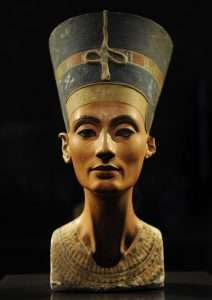
Miss Splendor?
And/or: ''We must not speak of god without light, because 'he' is the true light.....like a lantern which does enlighten us by the word: 'Thy Word is a Lantern to my feet, the Splendor of the 'Father' and the living Fountain of life' {''living water''?}......The father is as the Sun in his essence: from whence comes splendor and heat, which three are not seperated from another, but remain united together, although they are distinct: in this fire then our souls are warmed in the Love and fear of god, and lightened in his knowledge {talatat's?}.'' [Page 77/8 'Discourse on Fire and Salt].
The 'Sun' has risen in the west...." Enlarged throughout.
All as a means....?
'Brahmanism' or ‘Whirling Dervishers’ another form. Represented in chanting/ physical ‘dance’ form. Indicative of that return journey; but now by way of ‘altered states’. Indicative of the ‘life bit’ [ Explained within]. What the author of 'The Ancient Secret of the Flower of Life' calls "levels of consciousness". [First page, first chapter. Book by D. Melchizedek].
'Prometheus Rising' by R. A. Wilson.
The author of 'The Magister' defines the same, i.e.,with the same intent as a ''graduated ascent narrative...'' Gurdjieff implies the same with ''consciousness has degrees.''
Present example? Such authors as Lee Carroll have the same intent within such books as 'Kryon, Book 1, The End Times'.
"Kryon informs us that we as yet do not have real science, but only two dimensional science. The missing part is the 'spiritual' aspect of things, and this has always been shunned by scientists, but this aspect is 'where the real power and understanding is'. The reason for our existence on earth is 'to raise the vibration of the whole'. " [ A review of the above book by I. M. Stewart on Amazon].
Think about it in relation to the ''divine bit''. And/or ''transcendent third".
Question. Conspiracy theorists?
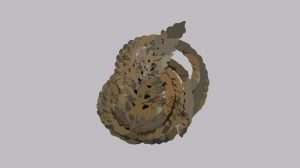 Or... "The physical world in which we live, the objectively observed universe around us, is only a part of an inconceivably vast system of worlds. Most of these worlds are spiritual in their essence; they are of a different order from our known world. Which does not necessarily mean that they exist somewhere else, but means that they exist in different dimensions of being. What is more, the various worlds interpenetrate and interact in such a way that they can be considered counterparts of one another, each reflecting or projecting itself on the one below or above it, with all the modifications, changes, and even distortions that are the result of such interaction. It is the sum of this infinitely complex exchange of influence back and forth among different domains that comprises the specific world of reality we experience in our everyday life." [First page, first chapter 'The Thirteen Petalled Rose by A. Steinsaltz].
Or... "The physical world in which we live, the objectively observed universe around us, is only a part of an inconceivably vast system of worlds. Most of these worlds are spiritual in their essence; they are of a different order from our known world. Which does not necessarily mean that they exist somewhere else, but means that they exist in different dimensions of being. What is more, the various worlds interpenetrate and interact in such a way that they can be considered counterparts of one another, each reflecting or projecting itself on the one below or above it, with all the modifications, changes, and even distortions that are the result of such interaction. It is the sum of this infinitely complex exchange of influence back and forth among different domains that comprises the specific world of reality we experience in our everyday life." [First page, first chapter 'The Thirteen Petalled Rose by A. Steinsaltz].
And/or..." A fundamental approach here is to consider these as a spectrum of perspectives, each useful at a particular step, until a new vantage point is gained and a new perspective gives a view to new horizons." [Extract from the book 'The Magister' ].
An objective exercise {regardless of subject} gives the same result.
Understand that universal framework; those universal [principles?] to make sense of the above; before you ask those bigger questions.
If understood correctly one could also use exactly the same words to define a learning process - the process and mechanics of - a step by step guide - in describing anything, that is learnt from scratch, i.e.,as an example any subject material, i.e.,''new perspective'' = eureka moment? Now try ''horizon'' to see if you agree or not.
'On Having No Head: Zen and the Rediscovery of the Obvious' / D. E. Harding.

Bluestar?
Side note: ''The best day of my life - my rebirth day, so to speak - was when I found I had no head. This is not a literally gambit, a witticism designed to arouse interest at any cost. I mean it in all seriousness. I have no head. It was when I was 33 that I made the discovery, though it certainly came out of the blue, it did so in response to an urgent inquiry - I had for several months been absorbed in the question: What am I?....What actually happened was something absurdly simple and unspectacular: just for the moment I stopped thinking. Reason and imagination and all mental chatter died down. For once words really failed me. I forgot my name, my humanness, my thingness, ALL that could be called me or mine. Past and future dropped away. It was if I been born in that instant, brand new, mindless, innocent of all memories, there existed only the Now, that present moment that was clearly given in it. To look was enough....It took me no time at all to notice that this nothing, this hole where a head should have been was no ordinary vacancy {void?} no mere nothing. On the contrary, it was very much occupied...." [Chapter one entitled 'The True Seeing' from the book 'On Having No Head'].
Continued: Or for a more up to date version of the same ’ideas’ but with more ‘information’ in relation to the whole subject...from another point of view, i.e., Paganism. Or more specifically. Modern Paganism...’The spiral dance’. By Starhawk. Or ‘ABC of Witchcraft’. By D. Valiente. Or for a general overview of the same...'The Mystic Spiral'. By J. Purce. Or for the ‘fairy story’ equivalent...’Cities of Dreams’. Chapter eleven. By S. Gooch.
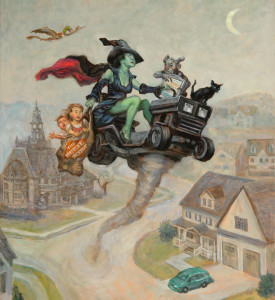
My kind of witch. Question. Who thought that? Question 2. Nanny Ogg OR Granny Weatherwax?
The word...‘Witch’...one of those words that can play on the imagination...if allowed to. In its basic form...simply means a woman who is "wise to the craft". ‘Framework’ and ‘craft’ being one of the same thing. The word ’Solomon’, [ wise male ]...being the male equivalent...in that then ‘Patriarch’ era. It was a woman-s way of saying that not only could they understand the same subject but had a right to do so as well. Hence the link eventually to ’Covens’. The female equivalent of the all male clubs. The origins of that first all female group. From those first inspirations/aspirations....of ‘girl power’ [ ‘Heaven’ help us?].
''A grove is a community of Druids. Many nondruidic pagan groups use this term as well. In some Wiccan traditions, groups of thirteen and under are known as covens, but once the group goes beyond 13 members, its called a grove.'' [Page 65 'Idiots Guide to Paganism' ].
Wicca/Wicce being ’modern paganisms’ equivalent of those male/female negative/positive aspects. While also being a link indirectly or otherwise to ’Pillar’ symbolism. Spot those common links/keys between the four books mentioned above. Especially in relation to the last one. Plenty of key words; like ‘red’ and ‘heel’; even though he is off the mark with their true meaning because of the want to fit them in within his own hypothesis.
'Shadow' of Stannis? {Game of Thrones}.
‘Red’ can be a link to the ‘unconscious’ aspect of something {i.e., spirit fire or 'fire' of the heart}. Spirit in relation to soul. As with ‘Set’ [or seth] of Osiris fame. Whose ‘related’ colour is red. As it is with the ‘red’ Hippo. One of sets ‘chosen’ animals. Symbolic of the same. In relation to ‘lower’. Strangely the same animal that is one of Mr Dawkins favourites. Think about it 'in relation' to this subject, i.e., from its 'unknown' start point. Possibility of, i.e., notice most of the animals that are related [symbolic] as a representation of the ''lower'' are 'water' specialists, i.e., live in water. 'Wet' in relation to 'dry'. Unconscious / conscious. Representing something unknown, that has the future potential of becoming a known quantity.
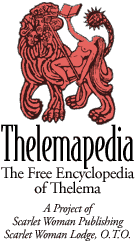
Or even the ‘Scarlet Thread’ of old testament fame. A link to the ‘unconscious’ [and/or 'negative/shadow'] aspect of ‘thread/web’ symbolism [explained elsewhere], i.e., red threads to be shown within the walls of Jericho {window} = feminine aspect representing the unconscious. Circumambulation of those same walls = a manifestation of same principles. ... in the positive sense, i.e., after eliminating all those negative aspects of the self. Like a spiral which contains both clockwise and counter clockwise principles {labyrinth and Nazca Lines link}. All as a means....
Melisandre of Asshai ? {Game of Thrones}.
More often than not that final act represented by such key words as 'wedding' or 'marriage'. Hence the link to the 'Song of Solomon' or the Alchemy equivalent...'Conjunction'. Both explained elsewhere.
From a different perspective: "At the temple of Edfu - Seshet stands as high priestess, scribe , record keeper and guardian of the mysteries. Her name means 'hidden'. Her hieroglyph, a rolled up papyrus tied with a red string- a still invisible manuscript - the story of your own becoming.'' [Page 117 'The Union of Isis and Thoth'].
That duality again invisible/visible as a means....
Try rolled/UNrolled.
And/or: "Look closely at the temple of Denderah {Hathor} and listen to the muffled sound of bare feet of the priestesses as they glide up the worn sandstone steps, singing their way to the roof top. Their songs are accompanied by the sistra, frame drums, and the sizzling sound of the stars overhead.....'' Page 114 'The Union of Isis and Thoth'].
One relates more to top/down the other bottom/up. One more to the higher of the lower. The other lower of the higher.
All as a means to determine a MINDSET.

Only ''clothed'' once understood? Try ''Scallop'' as a means....?
Neolithic equivalent of something?..."At this stage of research, it seems wisest to suggest that the people of the Palaeolithic produced art for at least as many reasons as the hunter gatherers of the modern world. This same sense of variety pervades the depiction of human figures in the Old Stone Age...Some are superimposed upon, or associated with, animals. Some are very stylized, others are drawn in lifelike fashion...For the purpose of this book, the most interesting figures are those few which have attributes possibly associating them with the supernatural. The entrance to the cave of La Madeleine, in central France's Aveyron valley, is flanked on each side with a carving of a large reclining female figure, suggesting guardians or hostesses. Both are naked and virtually headless, with pubic triangles deeply etched. A bison {oxen link?} was drawn below one, and a horse below the other...As with all Palaeolithic images {archetypes?}, we lack the means to translate the artists message." ['The Pagan Religions of the Ancient British Isles'].
Naked/UNnaked. Triangles/squares and Circles. Valleys/mountains. Anything?
Side note: ''The word Chameleon comes from the Greek meaning 'Ground lion'...'' ['Impossible'].
And/or: ''The English word chameleon (/kəˈmiːliən/ kuh-MEEL-ee-un) is a simplified spelling of Latin chamaeleōn,[4] a borrowing of the Greek χαμαιλέων (khamailéōn),[5] a compound of χαμαί (khamaí) "on the ground"[6] and λέων (léōn) "lion"....
Reclining?

'Spirit' or 'Soul'?
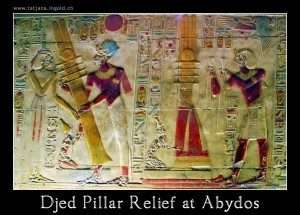
'Raising UPright.'
A work in progress: ''I will show the handiwork of My power through this handful of earth. I will polish the rust {'iron'?} of creation's darkness from the face of the mirror of its original nature. You will see the changing pictures of a chameleon in its minor....Then from the cloud of generosity {'UNknowing'?} the rain of love fell down on Adams earth, making the earth into clay. He made a heart of clay within the clay with the hand of power....Love's lancet {'spear'?} pierced the spirit's vein and out fell a drop. They called it heart....
Side note: ''....Dionysos, the young hero, whose name means 'light from the east', is initiated into the underworld - or birth/grounds his 'vision' in the Mother of the west.'' [Page 69 'Fruits of the Moon Tree' / A. Bleakley].
''Dionysos, born of a union between the thunder and lightening Father, Zeus, and the Moon Mother, Semele, spends six months in Semele's womb, and the last 3 months of pregnancy sewn into the thigh of Zeus, whence he is 'born'. So Dionysos is the WOUND in the thigh {The Wain?} of the masculine spirit Zeus - brought about by the moon...''
''Semele was a Thebian princess. She is the only mortal to be the parent of a god. She was one of Zeus many lovers and like most came to an unfortunate end due to Hera's jealous hatred. She is best known as the mother of Dionysus.''
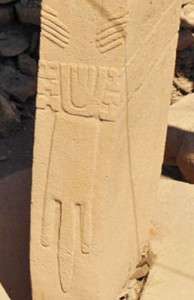
Try ''fingers'' / ''teeth''.
Continued: All the angels were biting the fingers of wonder with the teeth of astonishment....One by one they passed Adam. They would say: 'What strange picture is this that He is painting? What kind of chameleon is He bringing out from behind the veil of the UNseen?'.... According to some traditions, for 40000 years the divine power, in accordance with purrfect wisdom {i.e., step by step}, exercised its handiwork on the water and clay of Adam between Mecca and Taif. In his outward and inward dimensions the divine power set up mirrors corresponding to the divine attributes. Each mirror was the locus of manifestation for one of the attributes of 'divinity'. It is well known that one thousand and one mirrors corresponding to one thousand and one attributes were employed.'' [Pages 120-3 {Kindle} 'Tao of Islam' / M. Sachiko].
''Thousand'' to enlarge.
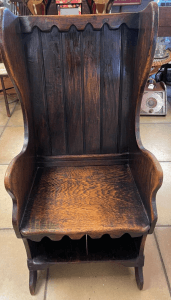
"These chairs were generally believed to be used by farmers whilst waiting in draughty barns for sheep to lamb, and also to keep sickly lambs under the seat to keep them warm."
''Our purpose is to provide knowledge of the soul, even though knowledge of all its attributes are impossible, for it possesses the characteristics of a chameleon. Moment by moment it displays a new colour, hour by hour another shape.
'He who knows his own soul knows his lord'. Hence Ali said: 'I and my soul are like a shepherd and his sheep....

“Most certainly, I tell you, one who doesn’t enter by the door into the sheep fold, but climbs up some other way, is a thief and a robber.
Whenever i gather them from one side, they run off in another direction'....'' [Page 812 {Kindle} 'Tao of Islam'].
Sheep decans?
'Gotland' for a landscape example.
Question. What does one get from sheep?
'Naked' to enlarge.
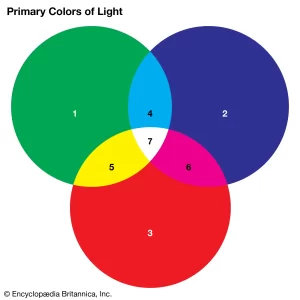
Whats the primary colour for M/F? NOT the secondry i.e., outer 'garment'!
Chameleons or chamaeleons (family Chamaeleonidae) are a distinctive and highly specialized clade of Old World lizards with 200 species described as of June 2015.[1] The members of this family are best known for their distinct range of colors, being capable of shifting to different hues and degrees of brightness. The large number of species in the family exhibit considerable variability in their capacity to change color. For some, it is more of a shift of brightness (shades of brown); for others, a plethora of color-combinations (reds, yellows, greens, blues) can be seen.
Chameleons are distinguished by their zygodactylous feet, their prehensile tail, their laterally compressed bodies, their head casques, their projectile tongues, their swaying gait,[2] and crests or horns on their brow and snout. Chameleons' eyes are independently mobile....''
Lizard Point?
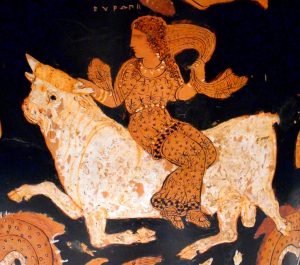
Naked or 'clothed'? The ''bull'' that is. And what that ASPECT means to the bigger picture.
A work in progress, i.e., something hinted at: "Stars vary not only in brightness but also in colour, and sharp eyes can easily see that a number of them are distinctly red. Idomeneus represents the red star Aldebaran, {Taurus} - and Homer describes him as 'looking like a god' and like a 'flame of fire'. Idomeneus hair is described as 'already flecked with grey', probably a reference to faint stars to the north of Taurus. And Idomeneus eyes are 'not of the sharpest' - a reflection, perhaps, of the dull-red characteristics of Aldebaran. Ares is the planet Mars, which, like Aldebaran, is red and in the zodiac. The personal star of Menelaus is another bright red star, Antares {Scorpio}, and the warrior from Sparta is referred to as 'red haired' and a peer of Mars, the red planet." ['Homer's Secret Iliad'].
Follow the title of the book to 'see' it in its broader context.
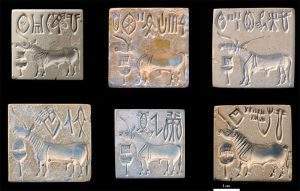
Unicorn stamp seals - found in Pakistan.
Side note {something hinted at}: "A panchymagogon contains twelve ingredients. Mumia from the corpse of a red-headed man 24 years old who has suffered a violent 'death', cut into bits, sprinkled with myrrh and aloes, soaked in alcohol, dried, and extracted with alcohol ''secundum artem''. The 'dry' part is extracted with olive oil for a month, and the extract mixed with the tincture to form a theriac. The zenexton of Paracelsus is stamped into trosichs by a stamp engraved with characters, and a substance is made from dried toads {frogs?}, arsenic, pearls, gems, musk, etc..." ['The Chemistry of Alchemy'].
Remember before those 1st impressions implore one to dial 999 - symbolic of something other than the obvious. Recall Osiris who was also 'cut into pieces' {fourteen} - Twelve related more to 'fire' {i.e., zenith} rather than 'moon'. Mummification link to 'myrrh' and 'olive' . Both a link to 'twentyfour'. The coming together of something. Understanding such connections {keys?} gives clues to such 'landmarks'' as latitude 24. The rest = ''red herrings''? Try ''frog'' / ''toad''.
''The phrase 'red herring' comes from using fish to confuse the hunting animals - dogs or hounds. [from the practice of drawing a red herring across a trail to confuse hunting dogs] : something that distracts attention from the real issue...''
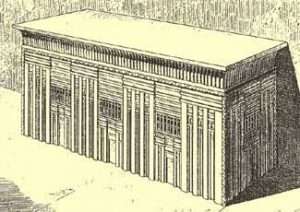
Shadow/light pattern?
And/or: ''Herring Girl Knitwear was inspired by the herring girls who long before the suffragettes were going out and following shoals of herring throughout the British Isles....The herring girls would knit guernseys for the fishermen. These were important because each port had its own pattern.'' ['Isle of Barra' : 'Readers Digest' / March 2023].

Any 'frogs'?
A working example: ''To the Maya living in the city of Xultun in Guatemala's Peten rain forest, a sweat bath was a sacred place symbolizing the circular nature of time and the cycle of birth and death.....the buildings are painted with images of a goddess who has the features of toads and iguanas....The sweat bath was later uncovered and reused from A.D. 850 to 971, when Xultun was beginning to decline. No one knows why...'' [Page 19 'Archaeology' / Jan/Feb 2021].
Question. Above or below the clouds. And/or - any conjunction {say} with Saturn/Jupiter?
Side step: "The Misty Mountains, Mountains of Mist or Towers of Mist (Hithaeglir in Sindarin as a plural; translated also Line of Misty Peaks) was a great mountain range that lay between Eriador in the west and the Great River Anduin in the east....The Mountains of Moria, three of the Misty Mountains' most massive peaks, surrounded Dimrill Dale: Silvertine on the west, Redhorn on the north, and Cloudyhead on the east – in Sindarin respectively Celebdil, Caradhras and Fanuidhol."
'Cloud of Unknowing' to enlarge.
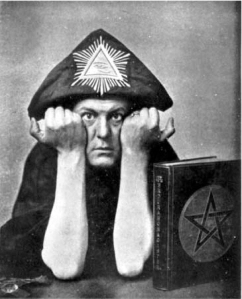
Fire or water?
Continued: "Do what thou wilt shall be the whole of the law." A quote made often by A. Crowley - and like most things said by same - incomplete. Red herring? {depending on ones {intuition?} of each individual}. The final remaining sentence of the FULL quote - "Love is the law. Love under will." First sentence in relation to ''lower'' - that final one in relation to ''higher''. {'grace' / 'joy' link}. And/or: ''Rising above the horizon''. Both enlarged throughout - as a means to...?

''It will never take place while i'm alive''. Question. A political animal or a spiritual one?
Egyptian equivalent?..."Horus the Elder {as distinguished from Horus the Child }- and/or ''younger''? This readers input - "was venerated particularly at Edfu as the divinity of light triumphant over Seth, entity of darkness. Horus of Edfu, then, as principle of light, is represented by a solar globe with the wings of a Falcon, his sacred animal. On the inner face of the east pylon of the Temple of Edfu is minutely detailed description of the annual Festival of the Re-union, in the course of which Hathor of Dendera {of lunar character} was brought to Edfu to meet Horus at the new moon, to celebrate the day of the conjunction." [Extract from the book 'Egyptian Mysteries'].
Sun/moon. East/west. Light/dark - as a means to an understanding. An understanding, that is, of something OTHER than the obvious.
Question. Where along that river - the only one that flows South - North - does it ''rise above the HORIZON''? And where was it determined {at the bottom of a well?} that shadow no longer existed? Only ''light'' prevailed!
 Question. Woman 'exposing' an open book - 'available' to all. Female animus or Male anima? or shadow aspect of both,[i.e., 'boundary' line between the 'two'] - as a means to represent [inspire?] - the 'start point' [beginnings?] of a learning curve. Question 2. Why bother at all? Either way - lots of 'keys' to be found - but don't ever forget that pinch of salt. Objectivity at all times. It keeps ones feet firmly planted.
Question. Woman 'exposing' an open book - 'available' to all. Female animus or Male anima? or shadow aspect of both,[i.e., 'boundary' line between the 'two'] - as a means to represent [inspire?] - the 'start point' [beginnings?] of a learning curve. Question 2. Why bother at all? Either way - lots of 'keys' to be found - but don't ever forget that pinch of salt. Objectivity at all times. It keeps ones feet firmly planted.
Leo/Virgo?
"Hargreaves Rosicrucians has an illustration of an object showing an Egyptian cross and disk with our present symbols of Leo and Virgo, or Scorpio, purporting to be from the breast of a mummy in the museum of the London university." ['Star names and Their Meaning' under 'Aquarius'].
Question. Squaring the circle? and/or: is Mr Allen aware of this subject?
A working example: She is the 'mother' of the usual Divine fish-child Dylan who, after killing the usual Wren {as the new year Robin does on St. Stephen's day} becomes Llew Llaw Gyffes - the 'lion with the Steady Hand' - the accomplished 'sun-hero' with the usual heavenly 'twin' at his side....the usual Matriarchal Triple or White goddess who gives her son Llew Llaw a 'name' {new one?} and a set of arms." [Pages 97/100 'The White Goddess'].
And/or: ''When Wren whirls from stone to furze the world around her slows, for wren is quick, so quick she blurs the AIR through which she flows, yes rapid wren is needle, rapid wren is pin - and wren's song is sharp - song, briar - song, thorn - song, and wren's flight is dart - flight, flick - flight, light - flight, yes - Each wren etches, stitches, switches, glitches, yes - Now you think you see wren, now you know you don't.'' ['The Lost Worlds' R. Macfarlane and J. Morris].
Pine?

Square on?
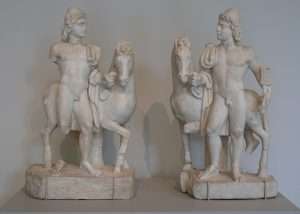
Castor and Pollux {'duality'}. In 'profile' or 'face on'? Baldies?
Side note: ''In Celtic mythology Orion is called Mabon. Betelgeuse the brightest star {left shoulder}. The winter deity of the sun - the only god that can handle the hunting dog - and Sirius is named Drudwyn. They also believed there was a constellation called Lugh {Perseus, a sun god}, who 'dies' as the nights gets shorter after the summer solstice after sun set. Feast Day {'joy'?} on the 1st of August {Yorkshire Day}. Lugh also in reference to cock robin in the ancient belief that the souls of people turn into birds after death. They were also two other important constellations of Celtic myth. Llyr {Square of Pegasus} - 'white' horses riding the waves, close to the beach {'wet/dry'} - and Epona {Andromeda} riding on its back.'' ['Mirthy' 2022].
''The poet Hesiod presents a folk etymology of the name Pegasus as derived from πηγή pēgē 'spring, well', referring to "the pegai of Okeanos, where he was born".[2]

State emblem of Mongolia. 'M' steering?
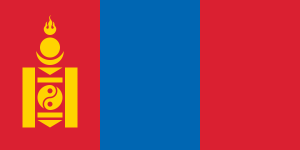
Flag of Mongolia
A proposed etymology of the name is Luwian pihassas 'lightning', and Pihassassi, a local Luwian-Hittite name in southern Cilicia of a weather deity associated with thunder and lightning. The proponents of this etymology adduce the role of Pegasus, reported as early as Hesiod, as the bringer of thunderbolts to Zeus. That interpretation was first suggested in 1952 and remains widely accepted,[3] but Robin Lane Fox (2009) has criticized it as implausible.[4]
Michael Brown, who has been studying ancient and medieval Greek poetry in the context of the Greek-North European dialogue, has concluded from his studies that the word Pegasus is a pre-Celtic-PIE word, one that did not evolve into one of the numerous common names listed in both Greek and Western languages. This concept is discussed further in "Linguistics and Classical Theology", by William S. R. Miller, which is based on his work with Charles F. G. Osterhaus's analysis of the word and its relationships to Greek and Italian. The relationship of "Pegasus" to "Cyrillic" is discussed further in his Phrygian Monikers and the Naming of Greek Pronunciation "Cyrillic or Pene-Orthogyrin" and "Pegasus" as an Early Semitic construct.[5]
Springs
According to early myths, everywhere the winged horse struck his hoof to the earth, an inspiring water spring burst forth. One of these springs was upon the Muses' Mount Helicon, the Hippocrene ("horse spring").[6] Antoninus Liberalis has suggested,[7] that it was opened at the behest of Poseidon to prevent the mountain swelling with rapture at the song of the Muses. Another spring associated with Pegasus was at Troezen.[8] Hesiod relates how Pegasus was peacefully drinking from a spring when the hero Bellerophon captured him.
Thunderbolts
Hesiod wrote that Pegasus carried thunderbolts for Zeus. [Wiki].

A sore loser? .....''Everybody knows, everybody knows, everybody knows''
 "And here a secret i will disclose to you, which is the ground unto our secrets all, which if you do not know you shall but lose, thy labour and costs both great and small. Take heed therefore that in error you not fall, The more your earth, and the less your water be, the rather and better solution shall you see." Alchemy's equivalent [green 'lion'] of the beginnings of understanding something - defined in 'alchemy's' case as 'Calcination' and 'Solution'. Earth in relation to 'salt' . Water in relation to 'mercury' - as a means to an understanding. [Extract from - including highlights - with the exception of the bold word - 'The Alchemical Amphitheatre' by M. Katz].
"And here a secret i will disclose to you, which is the ground unto our secrets all, which if you do not know you shall but lose, thy labour and costs both great and small. Take heed therefore that in error you not fall, The more your earth, and the less your water be, the rather and better solution shall you see." Alchemy's equivalent [green 'lion'] of the beginnings of understanding something - defined in 'alchemy's' case as 'Calcination' and 'Solution'. Earth in relation to 'salt' . Water in relation to 'mercury' - as a means to an understanding. [Extract from - including highlights - with the exception of the bold word - 'The Alchemical Amphitheatre' by M. Katz].
The word 'see' can be used throughout this subject regardless of which path [i.e., Thelma; Alchemy; Western way; Eastern one; Mystery clubs; Landscape symbolism; etc etc.,] - one 'starts' off on. Those keys are universal. The more one studies [as in any subject or interest] the more one learns. The READERS way - the [slow?] but sure way. The safest way. Enlarged elsewhere and throughout.
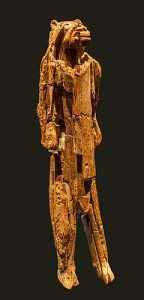
The Lion Man. The earliest known anywhere {40,000 years} - that emphasizes a 'duality'. A horse also found {40,000} that emphasizes a 'NATURAL' form. The 1st of THEIR kind {both in bone}.
Green in relation to fertile - by way of the sun, i.e., light - therefore representing - a consciousness of something - a realization [or 'dawning'] of something. 'Lion' in relation to king of the Beasts and/or desert and/or jungle? Recall what jungles are full of - what do animals/trees represent. Therefore higher of the lower - if only in the micro sense? The 'sun' being 'eaten' representing something external being taken [ingested?] internally, i.e., that 'external' understanding helping something to [develop?] internally? Representational of. See it? Link to the word 'gnosis' - its 'mechanics' - its purpose and meaning. Question. Fairy story? For adults?
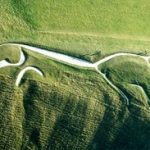 Mayan analogy? ''Known formally by his royal name, K'inich Yax K'uk Mo, he reigned for eleven years. His name is translated as 'Radiant First Quetzal Macaw' or 'Sun Eyed Green Macaw' or 'Sun in the Mouth of the Quetzal Bird'. The many interpretations of his name are reflected in the various theories regarding his origins." [www.ancient.eu/yax_k'uk_mo].
Mayan analogy? ''Known formally by his royal name, K'inich Yax K'uk Mo, he reigned for eleven years. His name is translated as 'Radiant First Quetzal Macaw' or 'Sun Eyed Green Macaw' or 'Sun in the Mouth of the Quetzal Bird'. The many interpretations of his name are reflected in the various theories regarding his origins." [www.ancient.eu/yax_k'uk_mo].
Side note: ''Hot and Cold, Moist and Dry, are not substances, but qualities {as opposed to 'Quantities'?} - and accidents from whence natural Philosophers forged 4 elements....Fire which is the chief and principle of all....Aristotle writing to Alexander related to him, that he had learned from the Brahmans, that there was a fifth Element or Essence, which is fire, wherein the Divinity resides: because it is the noblest and purest of all the Elements; and that which purges all things....Fire which produces hot and dry exhalations agitated with winds, easy to take flame - also of flints, of Iron, and of Wood, and of scraped bones, especially those of a lion, says Pliny: whence we may gather that there is a potential fire in all....'' [Page 16 'A Discourse of Fire and Salt' / Blaise de Vigenere].
Question. Did Pliny understand or attempt to understand a mind set? i.e., Mystery clubs?
Accident / Synchronicity?

The Eye of Horus. Stag eye? And/or: Amun = ''hidden''. 64 objective aspects. Positive/Negative?
REFRESHER: "In the woman's meditation the Self appeared as a deer, which said to the ego: ''I am your child and your mother. They call me the 'connecting animal' because i connect people, animals, and even stones with one another if i enter them. I am your fate or the 'objective I.' When i appear, I redeem you from the meaningless hazards of life. The 'fire' burning inside me burns in the whole of nature. If a man loses it, he becomes egocentric, lonely, disorientated and weak." ['Man and his Symbols'. Mentioned elsewhere].
A work in progress: ''Hatshepsut - A former Kings Wife with a markedly female name - meaning 'foremost of the noblewomen'...'' [Page 13 'Hatshepsut' / Metropolitan Museum of Art].
Continued: Neolithic equivalent? 'Blue' stones started on the outside {external} eventually to end up {learning process?} - on the inside. A representation of something - other than the obvious. Other information {clues? i.e.,'keys'} elsewhere; in order to access {negate?} one way or the other.
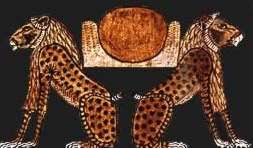
Sun {stone?} = 'horizon' link {E/W}..."Yesterday and today'' = Hindsight/foresight link? Enlarged elsewhere.
''A round stone is a symbol of the self... The lions a royal couple, are in themselves a symbol of totality {'sixteen' ?}. In medieval symbolism, the ''philosopher's stone'' {a pre-eminent symbol of man's wholeness} is represented as a pair of lions or as a human couple riding on lions. Symbolically, this points to the fact that often the urge toward individuation appears in a veiled form, hidden in the overwhelming passion one may feel for another person. {In fact, passion that goes beyond the natural measure of love ultimately aims at the mystery of becoming whole, and this is why one feels, when one has fallen passionately in love, that becoming one with the other person is the only worthwhile goal of one's life}. As long as the image of totality in this dream expresses itself in the form of a pair of lions , it is still contained in such overwhelming passion. But when lion and lioness have turned into some king and queen, the urge to individuate has reached the level of conscious realization, and can now be understood by the ego as being the real goal of life." ['Man and His Symbols' / C. Jung]. Try ''cattle''.
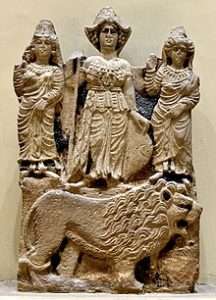

Folded or UNfolded?
And/or: ''During the Middle Kingdom, the catlike and lionlike qualities of princesses and Queens {ONLY?} were emphasised , as shown by cat-claw anklets and the use of the Sphinx form in the statues of queens. While one might speculate that this was the result of the domestication of cats during the course of the First Intermediate Period, even in the Old Kingdom queens and princesses had been associated with lions, which appear on sedan chairs and thrones....Female cats and lionesses were associated mythologically with goddesses, the 'eye of Re', while male cats were sometimes linked with the sun god Re himself.'' [Page 13 'Hatshepsut: From Queen to Pharaoh' / Metropolitan of Art].
Refresher: An Egyptian 'mummy' brought into the Pawn shop {'Pawn Stars' / History Channel}. Among others, an image can be seen of 'Isis' laid out on the back of a lion/lioness Evaluated by Egyptian expert Phineas Kastle as: ''probably belonging to a priestess of Isis, possibly of Royal lineage."
Question. 'Kingship' related?

On their way to the vets?
"The litter is a class of wheelless vehicles, a type of human-powered transport, for the transport of people. Smaller litters may take the form of open chairs or beds carried by two or more carriers, some being enclosed for protection from the elements. Larger litters, for example those of the Chinese emperors, may resemble small rooms upon a platform borne upon the shoulders of a dozen or more people. To most efficiently carry a litter, porters either place the carrying poles directly upon their shoulders or use a yoke to transfer the load from the carrying poles to the shoulders."
Refresher: "King Agamemnon's home in Mycenae, the golden city with its famous Lion Gate, was linked to the familiar lion-like shape of the constellation Leo; the steeply rising Peloponnese mountains along the Bay of Corinth became the Lion's broad back, and an ancient route from Mycenae via Cleonae to Corinth became his front legs..." ['Homers Secret Iliad'].
A working example {i.e.,exercise}: Different bones of different animals used in making up a ''hybrid'' type creature - mainly cow {cattle} and horse parts - left in ''rubbish'' pits. UNMARKED {i.e.,uneaten}. Winterbourne Kingston in Dorset. South coast. {'Digging for Britain' / Series 4. Episode 1]. To understand why - get into that mind set. Something of that ''inner'' quality rather than - ''an offering to the gods to secure a good harvest or some good fortune for the community''. Among others try ''rubbish'' / ''Icknield Way'' etc.
And/or: ''Sandbanks is a peninsula on the south coast of Dorset.'' ['The Chase'].
Question. Altar of ''witness'' or Altar of ''sacrifice''. Enlarged elsewhere. Try ''Winchester''. Part 3.
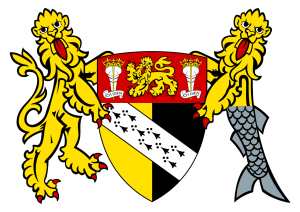
Norfolk: Spear points?

Ibex carving on Sperm Whale tooth.
Try ''Ibex'' Part 3.
REFRESHER..."Got to see it, rather than just read it..." John Humphrys talking to D. Tennant and Greg Doran in relation to the plays by W. Shakespeare. [400th anniversary. Radio 4. 23/04/16].
A working example i.e., something hinted at OTHER than the obvious; as a means....?: "The three tiny eyes of the worker bees originate deep from within their bodies....These eyes have not been exposed to the external effects of the suns influence. Because the new queen, having been ''born of the sun'', brings new sunlight into the beehive with her own 'body', the workers with their tiny eyes suddenly begin to ''see''; I would like to say, they become clairvoyant and cant stand to see the light emanating from the new queen. The entire horde begins swarming. It is as if they are 'afraid' of the new queen because she seems to 'blind' them...." [Page 14 'Bees' / Rudolf Steiner].
"open thine eyes and 'see'...." {1 Kings xix.16}.
Side note: The author of 'A Discourse of Fire and Salt' uses the word ''bee'' throughout.
And/or: "Many years ago the English psychologist, F. W. H. Meyes, suggested that - ''hidden in the depth of our being is a rubbish heap as well as a treasure house''.
"I will give you the treasures of darkness and the secret places." {Isaiah 45,7}.
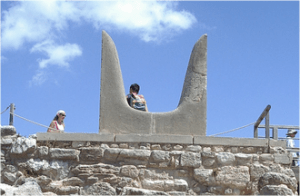
Pleiades riding the horns?
Side step: "The further back we go in our search for the origins and meaning of the Moon Goddess the nearer do we come to the animal concept. Hecate was once, in the dim past, the three headed hound of the moon. Artemis was a bear. Isis was Hathor the cow goddess. Cybele was once a lioness or a lion headed goddess. She sits on a lion throne and rides in a chariot drawn by lions...In the later centuries of the Egyptian worship of Osiris it was said that Apis, the bull, was the spirit of Osiris..." [M. Harding book].
'Spirit' and 'Soul' - AS A MEANS...?
And/or - 'Ways of Seeing' by J. Berger.
Refresher: "King Agamemnon's home in Mycenae, the golden city with its famous Lion Gate, was linked to the familiar lion-like shape of the constellation Leo; the steeply rising Peloponnese mountains along the Bay of Corinth became the Lion's broad back, and an ancient route from Mycenae via Cleonae to Corinth became his front legs..." ['Homers Secret Iliad'].
House Lannister? {Game of Thrones}.
Something hinted at: "Leo's symbol has supposed to portray the animals mane, but seems more appropriate to the other extremity - twisting between the hind legs and over the back...Its drawing has generally been in a standing position, with the characteristic Sickle fairly represented...in the foreparts of the figure, the bright Regulus marking the Handle. It made up all the components of the sickle... These same Sickle stars were a lunar asterism...Regulus was believed to have ruled the affairs of the heavens - a belief current, until 300 years ago, from at least 3000 years before our era. Thus as Sharru, the King, it marked the 15th ecliptic constellation of Babylonia..." Among others try ''furrow'' / ''15'' / ''Virgo'' / to make a further connection.
Huntingdon.
 And/or: "Deneb {'tail end'} was of unlucky influence in astrology, portending misfortune and disgrace, and thus opposed to Regulus in character as in position...The Egyptian king Necepsos, and his philosopher Petosiris taught that at Creation the sun rose here near Deneb, and hence Leo was Domicilium Solis, the emblem of fire and heat, and in astrology the House of the Sun, governing the human heart...It was a fortunate sign, with red and green as its colours...Was in charge of the wind...coming from the north by a third northwest..." [Page 252, 259 'Star Names and Their Meaning'].
And/or: "Deneb {'tail end'} was of unlucky influence in astrology, portending misfortune and disgrace, and thus opposed to Regulus in character as in position...The Egyptian king Necepsos, and his philosopher Petosiris taught that at Creation the sun rose here near Deneb, and hence Leo was Domicilium Solis, the emblem of fire and heat, and in astrology the House of the Sun, governing the human heart...It was a fortunate sign, with red and green as its colours...Was in charge of the wind...coming from the north by a third northwest..." [Page 252, 259 'Star Names and Their Meaning'].
Connect those keys, i.e.,Constellation Leo or Sun/Leo on the 'Ascendent' ? [cusp?}. As a means...?
''...mystery of becoming whole'' {i.e.,in its early stages?} = the {Mask} of Agamemnon? Representation of.
"He who aspires to be a sage and to know the Great Enigma of Nature must be the heir and despoiler of the Sphinx: his the human head, in order to posses speech; his the eagles wings, in order to scale the heights; his the bulls flanks, in order to furrow the depths; his the lions talons, to make a way on the right and the left, before and behind." [Quote taken from the chapter entitled 'The Candidate' from the book by E. Levi].
To plough the waves?

''Her body glows and TINGLES from the crown of the head to her TOES. I like learning about the universe in this way.'' [Page 203 'The Quest of the Rose'].
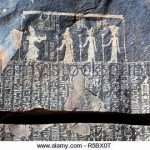
Toehold?
"Distinct reference is made to Leo in an inscription on the walls of the Ramesseum at Thebes, which, like the Nile temples generally, was adorned with the animals bristles {touch/'taste'?}; while on the planisphere at Dendera its figure is shown standing on an outstretched serpent. The Egyptian stella Lion, however, comprised only a part of ours, and in the earliest records some of its stars were shown as a Knife, as they now are as a Sickle..." [Page 253 'Star Names and Their Meaning'].
Recall the position of Thebes. Among others try ''whiskers'' / 'Beard' / ''sickle/knife''. What does it all represent?
''Knife Edge''?
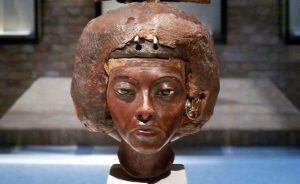
''Westward leading still proceding, guide us to....'': Canary Islands or Libya?
A work in progress: ''Above us 'hang' the Imperishable Ones, the circumpolar stars that never set; they are the souls of the gods, untouched by death. Here sit Draco, the original northern star that signified an eternal Osiris, and the Big Dipper, what the ancients called the Foreleg of Seth. When the Gt. Pyramid was built in 2600BC - two airshafts leading into the Kings Chamber {'attic'?} at the heart of the pyramid were astronomically designed to align with Draco the true northern star {north being the land of Osiris} AND with Orion, the southern constellation of the 'hunter' god {south being the land of Seth}....Early Egyptian pharaohs erected tombs in both north and south PERHAPS as a means of asserting dominance over both lands...or as a symbol of the souls continued influence over the whole of Egypt...The northern tombs functioned as initiation and burial sites, but the southern vaults and cenotaphs never contained a body, although it was said that the kings placenta was buried there {'navel' therefore 'death/rebirth'?}.'' [Page 375 'Dreams of Isis: A Womans Spiritual Sojourn' / N. Ellis].
Isaiah 19:19 to enlarge.
REFRESHER: Working example: Jung had a woman patient who had a dream about falling into a pit of snakes - she saw Jung up above who was pushing her down further into the pit as she herself was attempting to climb upwards shouting: ''Not out but through''.
'Khafre' and ''twenty'' to enlarge.
Begin at Part 1 with ''forest''.
Understanding that gives a direction to follow relating to the beginning and end of the Horus journey especially in the Old Kingdom.
Upstream or Downstream? A beginning or end?

Navel of the world? Placenta?
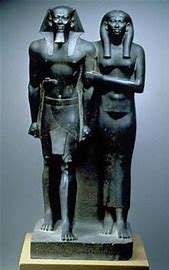
Creative 'pattern'?
And/or: ''It is true that the goddess myths are potentially transformative tales for women {and or anima?}. But we cannot reach their deeper meaning until we push through {i.e., ''not out but through''} - the patriarchal overlay that keeps us from knowing their core {navel?}. The Greek myth of genesis is a recording of how the goddess came to lose their power...It is only by way of passing through the gates of the father-told stories {Amun-Ra?} that women {and/or anima} are able to enter into the deeper mystery of these goddesses mysteries...How the father story {Amun?} affects the son is more evident in our mythic and literary traditions {'line of sight'?}, while the impact on the daughter remains a more hidden drama {'Afar'?}...When she becomes a woman {or anima}, a Daughter of Saturn may find herself living out her legacy as a swallowed daughter { Jupiter/Saturn conjunction?}.....It is a well known maxim in understanding the roots of ones personal psychology that one has to go back at least three generations to find the ancestral family PATTERN.'' [Extracts from 'Daughters of Saturn: From Fathers Daughter to Creative Woman' / P. Reis].
'Grandmother'?
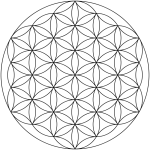
Imprint found behind a boulder at the Osireion. Question. Spirit or soul?
Continued: ''In Giza, Memphis and Saqqara, tomb shafts aligned with Draco, so that the SOUL might become one with the imperishable stars. In Abydos tomb shafts aligned with Orion {'upright' therefore 90 degrees?} and related to the physicality of humankind, to sexual prowess and to the powers of regeneration {'reincarnation'?}....The northern shaft in the GT. Pyramid was used by the ba as a connection to the upper world. The southern one by the ka - as a connection to the lower world and karma. According to the ancient texts we have a choice - eternal life or repeated births - Final liberation or return to incarnation.'' [Page 376 'Dreams of Isis'].
Smith/Jones to enlarge.
![220px-Paderborner_Dom_Dreihasenfenster[1]](https://esotericbasics.co.uk/wp-content/uploads/220px-Paderborner_Dom_Dreihasenfenster1.jpg) "Draco's stars were circumpolar about 5000BC and like all those similarly situated - of course few in number owing to the low latitude of the Nile country - were much observed in early Egypt, although differently figured than as with us. Some of them were a part of the Hippo or of its variant the Crocodile, and thus shown on the planisphere of Denderah and the walls of the Ramesseum at Thebes. As such Delizsch says that it was Hes-mut, perhaps meaning the Raging Mother {'Mad Mother'?}. An object resembling a ploughshare held in the creatures paws has fancifully been said to have given name to the adjacent Plough. The hieroglyph for the Hippo was used for the heavens in general; while the constellation is supposed to have been a symbol of Isis Hathor, or Athyr, the Egyptian Venus; and Lockyer asserts that the myth of Horus which deals with the Hor-she-shu, an almost prehistoric people even in Egyptian records, makes undoubted reference to stars here; although subsequently this myth was transferred to the Thigh, our Ursa Major. It is said that at one time the Egyptians called Draco Tanem not unlike the Hebrew Tannim or Aramic Tannin...Among Arabian astronomers Al Tannin equates to the Poisonous Dragon....There was a belief among early astronomers that when a comet was here poison was scattered over the world." ['Star Names and their Meaning' under Draco].
"Draco's stars were circumpolar about 5000BC and like all those similarly situated - of course few in number owing to the low latitude of the Nile country - were much observed in early Egypt, although differently figured than as with us. Some of them were a part of the Hippo or of its variant the Crocodile, and thus shown on the planisphere of Denderah and the walls of the Ramesseum at Thebes. As such Delizsch says that it was Hes-mut, perhaps meaning the Raging Mother {'Mad Mother'?}. An object resembling a ploughshare held in the creatures paws has fancifully been said to have given name to the adjacent Plough. The hieroglyph for the Hippo was used for the heavens in general; while the constellation is supposed to have been a symbol of Isis Hathor, or Athyr, the Egyptian Venus; and Lockyer asserts that the myth of Horus which deals with the Hor-she-shu, an almost prehistoric people even in Egyptian records, makes undoubted reference to stars here; although subsequently this myth was transferred to the Thigh, our Ursa Major. It is said that at one time the Egyptians called Draco Tanem not unlike the Hebrew Tannim or Aramic Tannin...Among Arabian astronomers Al Tannin equates to the Poisonous Dragon....There was a belief among early astronomers that when a comet was here poison was scattered over the world." ['Star Names and their Meaning' under Draco].
Grenada.
''Poison'' in relation to untransmuted/ transmuted. And or incarnate/reincarnate ? Try ''Tenem'' Part 3.
'Hair of the Dog'? {Anubis?}.
And/or ''Ploughshare'' = a ''quarter'' of something? Fore quarter?
''Foreleg of Seth''?
''The word tannin comes from the old German word tanna meaning oak. It refers to the use of wood tannins derived from oak trees that were used to convert animal hides into leather.''

snake/scalp

'Snake/Dragon head' on land. 'tail' in the sea.
The astronomer Marian Hatch noted that one of the stars in the constellation Draco — the huge snake which slithers across the northern part of the skies in a sequence of eighteen visible stars — had served as a fiducial, or guide-star, for the Mayans from 1800 Bc and 500 ap.*’ At that time, it transited the meridian at midnight on the 23 May and 22 November every year, with a deviation of less than one degree. Hatch noticed that the pathway of this star corresponded with the pictures of serpents on the pages of one of the most remarkable codices to have come from pre-Columbian South America, the Tro-Cortesianus Codex. The snake — equivalent of the European draco — winding its way through the calendrical day-signs. Drawing based on two fold-sheets from the Mayan Tro-Cortesianus Codex. What really fascinated us about the connection between the ancient Mayan diagrams and the classical descriptions of the Western stars was that the draco tail of the Mayans ended on the Pleiades.’ The Yucatec Mayan Tzab means the ‘rattle of a rattlesnake’, and also ‘Pleiades’. Bearing in mind that the rattle of this snake is in the tail, we find it remarkable that in ancient times the Western astronomers of Greece located the tail of their Taurus, the Bull, precisely on the Pleiades.”.....The Pleiades, a name which is from the Greek epic form pleios, ‘many’. Perhaps we could look to the stars for a meaning of the word Ladon? The Draco, or dragon, of the stellar maps is very ancient — at least Persian, as Azhdeha, the ‘Man-eating Serpent’.

 Side note: At some time or another in the life of the neophyte on the Path, the Beast within must be faced. If it is not faced, then the Beast will emerge and confront the neophyte. This esoteric truth is expressed to perfection in the ancient mythology of Theseus and the Minotaur. The monster (which was created by the sin of an unlawful human sexual encounter)” is imprisoned in a labyrinth. The labyrinth, with its winding corridors, is an image of the sausage-like brain within the cranium of man. In these corridors of the brain there roams a Minotaur which we must face with the courage of Theseus. When the dark beast is tackled on the inside of the labyrinth — within the secret places of the mind — the conflict which results is that which in religious disciplines is called the Dark Night of the Soul.”! When the creature comes ravaging from without, through the tunnels of maya, then it is called the Testing.....
Side note: At some time or another in the life of the neophyte on the Path, the Beast within must be faced. If it is not faced, then the Beast will emerge and confront the neophyte. This esoteric truth is expressed to perfection in the ancient mythology of Theseus and the Minotaur. The monster (which was created by the sin of an unlawful human sexual encounter)” is imprisoned in a labyrinth. The labyrinth, with its winding corridors, is an image of the sausage-like brain within the cranium of man. In these corridors of the brain there roams a Minotaur which we must face with the courage of Theseus. When the dark beast is tackled on the inside of the labyrinth — within the secret places of the mind — the conflict which results is that which in religious disciplines is called the Dark Night of the Soul.”! When the creature comes ravaging from without, through the tunnels of maya, then it is called the Testing.....AND/OR: The snake — equivalent of the European draco — winding its way through the calendrical day-signs. Drawing based on two fold-sheets from the Mayan Tro-Cortesianus Codex. ['The Zelator' / M. Hedsel].

The phrase "cut the head off the snake" is a metaphorical expression that means to eliminate the source of a problem or to remove a leader or key person in order to weaken or destroy an organization or group12. The head of a snake is where it has its fangs, which are used to inject venom into its victim1. The phrase implies
Continued: According to R. H. Allen, Star-Names and Their Meanings, 1899, Virgil called it Maximus Anguis, the Greatest Snake, and said that it glides in the manner of a river, between the two stellar bears. Allen suggests that this river-simile may be the source of the dragon-name Ladon, for the same name is used of a river in Arcadia, which flows into the Alpheus, and which was visualized as being the border of the Garden of the Hesperides. Allen even records another name, Custos Hesperidum, ‘Watcher over the Hesperides’, but gives no source for the title. In the myth, Ladon was killed by Hercules before he took the golden apples. The esoteric background to the labours of Hercules is dealt with in Alice Bailey, The Labours of Hercules, 1977 ed. For the Golden Apples, which figure in the Third Labour, see p.26ff.
REFRESHER: ''In chasing the old religions of Europe, we seem to be able to watch the spread in every direction of one great belief. It came of top of vague and scattered beliefs in some form of totemism. It was so much higher in the scale of ideas, that people jumped at it, as later they did with Christianity. Although the thoughts of many men probably went to form it, one suspects that only one really great thinker hammered it into shape. In attempting to appreciate how this idea was thought out...." [Page 154/5 'GogMagog'].
Blacksmith.
Try 'Dead Sea Scrolls' as ONE example.
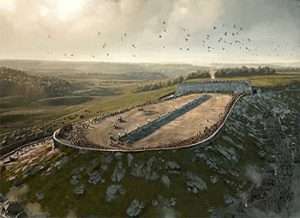
Alte Burg. Described as an oval shape 'hippodrome'. The first of its kind.
And/or: "Here I shall leave the quest for the moment. It has been most fascinating, and I think I have only reached a halting place on the road. Innumerable questions still keep tumbling into my mind. Was the Highland water - horse, for instance, only an idle tale of imagination formed from vague stories of the hippo in Egypt? Was it not rather a legend of former sacrifice to Isis, the moon goddess of the sea, coupled with Diana's horse, her totem horse? Similarly, what was the story behind the animal at Loch na Beiste, Skye? This, I have been told was traditionally a bull with one leg. Was this just a vagrant Walrus from Greenland? It is more likely to be some bull headed sea god....I do not know the answers to these and many more questions. I have, however, seen that folklore, which at one time did not seem to me to be a very promising line of investigation, can be linked in with archaeology and anthropology to give us a clearer understanding of much that we do not know...." Same book.

Hippocampus in the thermae {'hot'} baths at Aquae Sulis. A water horse or a flying one? The ''Water Horse'' can be associated with both fresh and salt water.'' Knotted Tail? {recall Capricorn}. The ''fore'' part of something. Associated with Poseidon - recall 'its' link {forepart?} to 'Zeus' {i.e.,he who illumines}. Wet/Dry? All as a means...?
Side note: Hebrew equivalent of something: "One of the trickiest parts of this discussion involves a misunderstanding caused by a very similar looking and similar sounding word in Hebrew: (tannim), which is often translated as “jackals.” Many early English translations of the Bible equated these two terms and rendered tannim as “dragons” instead of “jackals.” Conflating these two separate words has led to a great deal of the difficulty in nailing down a definition for tannin. For example, earlier it was shown that Strong’s concordance listed “jackal” as a meaning of tannin. But this is a result of mixing tannin and tannim.
Tannim is the masculine plural form of the Hebrew word tan, which does not appear in singular form in the Bible. Tan is the Hebrew word for jackal, so tannim would mean “jackals,” and it appears in 15 verses in the Old Testament. On the other hand, tannin is the singular form of the word for dragon or serpent, while the plural is tanninim, and tannin is found in 14 verses in the Old Testament. Under its entry for jackals {tan), the New International Dictionary of Old Testament Theology and Exegesis states, “The form tannîm is not to be confused with tannîn, sea creatures.” Many of the most well-respected Hebrew lexicons and wordbooks draw a distinction between tannin and tannim. Perhaps the easiest way to see the significant difference between the two words is to examine a handful of verses in which the terms appear.
Psalm 74:13 states, “You divided the sea by Your strength {Red/Reed one?}; You broke the heads of the sea serpents (tanninim) in the waters.” Notice the plural form of tannin is used to describe more than one sea serpent. Exodus 7 uses both the singular and plural form of this word." ['www.answersingenesis.com'].
Loch Nell serpent mound?
A distinction between wet/dry {i.e.,land/sea animals} while recalling that such animals as the whale and hippo were at one time land animals. All as a means...?
Question. How did those ancient ancestors know that?
And/or ''Jackal'' in relation to ''gestation'' {i.e.,a period of, i.e.,over time} - therefore ''Saturn'' link?
And/or ''29'' in relation to the 'eve' of something.
Something extra: ''In addition to tanning leather, tannins are used in photography, as mordants in dyeing, clarifying wine and beer by precipitating proteins out of them, and as astringents in medicine. Tannins are found commonly in the bark of trees, wood, leaves, buds, stems, fruits, seeds, roots, and plant galls.''
Exercise {intermediate level}: "Bochart said that the word Pegasus is a compound of the Phoenician Pag, or Pega, and Sus, the Bridled Horse, used for the figurehead on a ship, which would account for the constellation being shown with only the head and fore quarters; but others have considered it of Egyptian origin, from Pag, ''to cease'', and Sus, a ''vessel'', thus symbolizing the cessation of navigation at the change of the Nile flow. From this, Pegasus seems to have been regarded, in those countries at least, as the sky emblem of a ship. In the old work of the Destruction of Troy, we read of ''a ship built by Perseus, and named Pegasus, which was likened to a flying horse.'' Brugsch mentions as in its location an Egyptian constellation - the Servant - and some of its stars would seem to be shown on the Denderah planisphere as a Jackal." ['Star Names and Their Meaning' under Pegasus].
Square of Pegasus ? Which 'corner' {90 degrees?} would represent a ''plough-share's'' worth?
'Mans Search for Meaning' / Viktor Frankl.
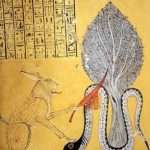
''The Dendera planisphere has in the Hare's place a serpent apparently attacked by some bird of prey." [Chapter 'Lepus the Hare' from the book 'Star Names and Their Meaning'].

The Lion Man. Oldest ever found. 40000 years. Belly button?
Continued: "It was Aker who opened the earths gate for the 'king' to pass into the underworld. He was also known to absorb the poison from the body of anyone bitten by a snake and he neutralizes the venom in the belly of a person who has swallowed an obnoxious fly {gnat?}. More importantly, he imprisons the coils of the snake, Apophis,...Allowing the 'back of Aker' to provide a secure passage for the sun-god's boat from west to east during the night." [www.touregypt.net/aker].
'The Anatomy of the Psyche' by Edinger.
''Hewitt says that in earliest Egyptian astronomy Lepus was the 'Boat of Osiris' who was identified with Orion."
Define those keys {highlighted} to understand something 'beyond' {horizon? i.e.,'in' or 'of'} - the obvious. Try ''belly'' i.e.,the memory of something that is then applied - in the positive sense of the word.
Synchronistic link?..."This is an image of a tiny piece of night sky in the constellation of Leo; actually where the mouth of the lion would be; and despite appearances it is one of the most interesting images taken in recent astronomical history" - the death of the first star ever recorded, 13 billion years ago - " The oldest single object ever seen...poetically named GRBO9O423...'' ['Wonders of the Universe' by B. Cox].
Something to ponder on: "Sometime the link with a constellation is quite straight forward; for example, Homer's many references to Achilles heart within his 'shaggy breast' relate directly to the location of his personal star, Sirius, at the heart of Canis Major amid other stars. Agamemnon, on the other hand, has a 'black heart', and, while that may say much about his character, a glance at a star chart shows that the 'heart' of Leo is in an area of dark sky..." ['Homer's Secret Iliad'].
Which came first. Subject material; naming of constellations or defining ''Precession'' ?
''God hath sent 'his angel', and has shut the lions mouth that they have not hurt me." [Dan. vi.22]. Taken from the book 'Guide for the Perplexed'.
''Angel means messenger..." Same book. Think about it in relation to ''archetypes''.
"The saying of our sages, the 'angel' is broad as the 'third' part of the universe, or, in the words of Bereshit Rabba {chap.x.}, that the angel is the third part of the world..." Same book. Page 166.
Transcendent third?
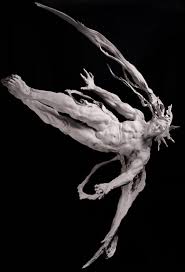
'Photon' / M. L. Snowden.
''The Self is often symbolized as an animal, representing our instinctive nature and its connectedness with one's surroundings. {That is why there are so many helpful animals in myths and fairy tales]. This relation of the Self to all surrounding nature and even the cosmos probably comes from the fact that the ''nuclear atom'' {divine bit link?} of our psyche is somehow woven into the whole world, both outer and inner. All the higher manifestations {'astral'?} of life are somehow tuned to the surrounding space-time continuum.'' ['Man and His Symbols' ].
Refresher: " I make no secret whatsoever of the fact that my rather revolutionary model of the atom came to me in a dream.'' Niels Bohr.
And/or..."But the form of the human being, whether youthful or old, is only one of the many ways in which the Self can appear in dreams and visions...It is no wonder that this figure of the Cosmic Man appears in many myths and religious teachings. generally, he is described as something helpful and positive. He appears as Adam, as the Persian Gayomart, or as the Hindu Purusha. This figure may even be described as the basic principle of the whole world...In ancient Persia, the same original First Man - called Gayomart - was depicted as a huge figure emitting light. When he died, {supernova?} every kind of metal sprang from his body, and from his soul came gold." See it?
Side note: 'Giants' beyond the North wall as members of the wildlings. [Game of Thrones].
continued..."His semen fell upon the earth, and from it came the first human couple in the form of two rhubarb shrubs {''vegetative'' link?}. It is striking that the Chinese P'an Ku was also depicted covered by leaves like a plant. Perhaps this is because the First Man was thought of as a self-grown, living unit that just existed without any animal impulse or self-will." [Same book].
 REFRESHER..."Perhaps in this way we shall attain the high philosophical goal of perceiving how the 'divine' life in man is joined in all innocence with 'animal' life." [Quote by Goethe. Enlarged elsewhere]. ''Fall'' and ''child'' link?
REFRESHER..."Perhaps in this way we shall attain the high philosophical goal of perceiving how the 'divine' life in man is joined in all innocence with 'animal' life." [Quote by Goethe. Enlarged elsewhere]. ''Fall'' and ''child'' link?
Recall what ''zodiac'' means. All as a means...?
Question. If the above is a correct analysis - how is it ancient man understood the dynamics of metals being 'created' by way of - exploding stars? Coincidence or a meaningful one?
Side noted: Families competing {'Game of Thrones'} for an Iron Throne. Question. What elements are created beyond that explosion?
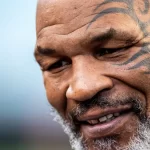
A Spirit of Nature.
''The material of the Philosophers Stone is nothing else but Sun {gold} and Moon {silver}." Paracelsus.
And/or: "The 'Sun' and 'Moon' are the roots of this Art." Hermes Trismegistus. 'SEE' anything.
Continued: "The ceremony of the opening of the mouth of the deceased with an iron hook - was common in Egypt and the Yakouts of eastern Siberia - a people believed originally to have come from Turkey. The ceremony is already found in the earliest texts of the Book of the Dead; and the reference to an iron hook is specific - which is curious since iron, though known to ancient Egypt, was seldom used. Why, then, an iron hook?" ['Serpent in the Sky'].
IRON - the last element to be produced before something goes bang.
Try Part 2:8 to make a connection.
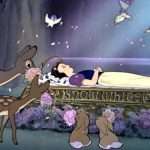
Siberia means ''sleeping land.''

'The star of ones BEING is rising'?
And/or: Only the Viking culture represented Orion as a female {the 'belt'}. And/or: A woman making 'garments' for humankind {for their 'nakedness'?}. The Pole Star was a NAIL which everything revolved around.
Fire wheel / Spindle wheel to enlarge.
A Work in progress: ''Utah gets its name from the Ute tribe....For a lot of the tribes here, the area around Polaris, the North Star, is a family HEARTH, with a mother figure on one side and the hunter father on the other side. The Navajo word for constellations is So'Dine'e, meaning Star People. The Big Dipper is known as the Male Revolving one who protects and leads his people. The stars of Cassiopeia form his counterpart, the Female Revolving one, who represents, growth, harmony and stability. Together, they turn around the Central Fire, Polaris. The Pleiades asterism, known as Dilyehe, acted as a timekeeper for the Navajo, as the timing for its disappearance from the evening night sky in May to its reappearance in June or july marked out the planting season. This purpose was represented in one story about the cluster, which saw the stars as seven youths who would sneak out {'trickster'?} and steal peoples seeds, leading to the traditional saying: Dont let Dilyehe steal your seeds.'' [Page 62 'Sky At Night' / July 2023].
Side note: "This nova {i.e.,within Cassiopeia}, is said to have incited Tycho to the compilation of his star catalogue, as that of 17 centuries earlier may have been the occasion of the catalogue of Hipparchos. At all events, it created a great commotion in its time, and induced Beza's celebrated prediction of the second coming of Christ, as it was considered a reappearance of the Star of Bethlehem..." [Page 147, 'Star Names and Their Meanings']. Try Hipparchos''.

 And/or: "We suppose, however, that pharaohs who happened to be born when a Sothic Cycle began were regarded as special, perhaps even messianic. In our book The Egypt Code, we argue that the birth of the pharaoh Akhenaten coincided in his lifetime with the return of a Sothic Cycle and may have been the impetus for the dramatic religious reforms...It is also possible that the birth of the 3rd Dyn. pharaoh Djoser - also coincided with the return of a Sothic Cycle, which in turn brought about the Step Pyramid Complex." ['Imhotep the African'].
And/or: "We suppose, however, that pharaohs who happened to be born when a Sothic Cycle began were regarded as special, perhaps even messianic. In our book The Egypt Code, we argue that the birth of the pharaoh Akhenaten coincided in his lifetime with the return of a Sothic Cycle and may have been the impetus for the dramatic religious reforms...It is also possible that the birth of the 3rd Dyn. pharaoh Djoser - also coincided with the return of a Sothic Cycle, which in turn brought about the Step Pyramid Complex." ['Imhotep the African'].
Question. Supernova or Sothic Cycle as a means...?
Conjunction?
Saturn/Jupiter?
Continued: "The Philosophers Stone is a term used by Cabalist's to denote the 'supreme' wisdom, the union of the divine consciousness or omniscient Solar Principle in man with the 'lower' consciousness or personality - which union has been the goal of Initiates in ALL ages. Exoterically the Philo. Stone is the secret of transmutation of the 'baser' metals into gold." ['Comte De Gabalis' / Abbe de Villars. Emphasis, this readers].
Continued: For a more ‘close to the mark’ attempt of understanding ‘heel’...at least for this reader...is within ‘Insights on the Scriptures’. Mentioned elsewhere. Or 'Alchemy's' equivalent. See picture. Found within. And/or especially Part two within the book 'The Mark' by M. Nicoll.
i.e.,"The feet are the lowest mind [representation of. This readers input]...in contact with the external world. This must be changed in this life." [Same chapter same book].
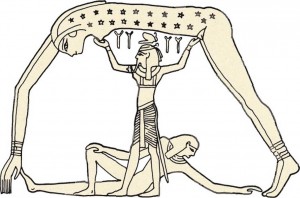
"The ground-plan {'Geb'/bottom up?}, accordant with cosmic reality {'Nut' top-down?}, was laid down in advance and no one may innovate." ['Her-Bak'. Parenthesis, this readers]. Shu {'air'/breath?} = mediator between the two? ALL as a means...?
And/or... 'The Son is the consciousness of the Father.' The 'Father' is the Mystery...the dazzling darkness of UNconscious Consciousness." Quote by Clement of Alexandria.
Sunset / seashore / Precession = 'Top-down' ? Sunset / lake / kundalini {i.e.,'seven' in relation to the word ''spirit''} = 'Bottom -up' ?
Question. What would that {possible?} connection be represented by?
Remember its a MINDSET we are attempting to understand.
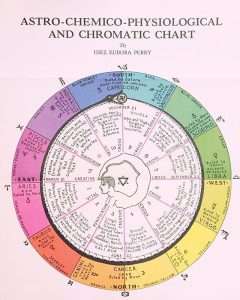
Head/Feet = Aries/Pisces?
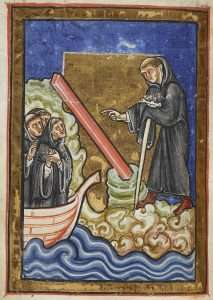
''Cuthbert discovers a piece of wood to be used as a roof beam.''
As seen from a different 'point of view': "The zodiac is circular, so it cannot be properly said to have a beginning or an end. However, the circle is said to begin in Aries, and end in Pisces. This 'severed' zodiac explains why the top of man, the head, is ruled by Aries, while his lower extremity, the feet, is ruled by Pisces. Men and women are the lengthened zodiac." ['The Zelator'].
Abydos and/or ''Upright''?
"Every part of the human being is linked with some part of the cosmos. We wished we had a mediaeval image of the zodiacal man to show the zodiacal rulerships...The head is ruled by Aries, the throat by Taurus, the feet by Pisces. You see then that the head and feet were linked with the two extremes of the zodiac. In the zodiac circle they touch..." ['The Zelator'].
Side note: "The figures are widely separated in the sky, the N/E one lying just south of Andromedae, headed towards it, and the S/W one; east from and headed towards Aquarius and Pegasus, the lucida marking the knot of the connecting bands." [' Star Names and Their Meaning' under Pisces].
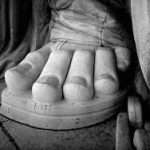 Firm feet on firm ground [as opposed to 'sand']. Represents something. As does the profession of shoemaker. Eliphas Levi who himself was the son of same. Understand this subject to understand the parts within the whole.
Firm feet on firm ground [as opposed to 'sand']. Represents something. As does the profession of shoemaker. Eliphas Levi who himself was the son of same. Understand this subject to understand the parts within the whole.
Side note: "One Corner of the Great Square {of Pegasus}, constituted the double asterism 24th and 25th nakshatras - referred to as Beautiful, Auspicious, or Happy Feet, sometimes also called a Carp or Ox; but Prof. Whitney translated it: 'Footstool Feet'' - others a Couch or Bed..." ['Star Names and Their Meaning' ].
Tropic of Cancer? Try ''footstool''.
Question. Where/how {regardless of it being represented in 'myth' form} did ''Pegasus'' 'originate' from? What does 'it' represent?
A work in progress: ''The following day we made our way straight down to the market and proceeded from there to the foot of the Citadel, where once the Abgars had their palaces {Nimrod link}. According to local people, 'Urfa' is derived from the original name for the city {Edessa}....It is the place referred to in the Bible as Ur of the Chaldees. According to tradition the patriarch Abraham was born in a cave at the foot of the Citadel....from the BACK of the cave fresh water spring emerges which create fish ponds, full of the sacred carp that the site is known for...The park that the ponds are in are shaded by plane tress and though the Pool of Abraham is flanked on one side by a Mosque for quite contemplation, its neighbour, the Pool of Zulha, is set in a tea garden.'' [Page 178 'Magi: Search for the Secret Tradition'].
''Straight South''?
'Storm in a tea cup'.
''CARP. verb find fault, knock (informal), complain, beef (slang), criticize, nag, censure, reproach, quibble, cavil, pick holes, kvetch (U.S. slang) His wife is constantly carping at him about his drinking.''
''Platanus /ˈplætənəs/[1] is a genus consisting of a small number of tree species native to the Northern Hemisphere. They are the sole living members of the family Platanaceae.
All mature members of Platanus are tall, reaching 30–50 m (98–164 ft) in height. All except for P. kerrii are deciduous, and most are found in riparian or other wetland habitats in the wild, though proving drought-tolerant in cultivation. The hybrid London plane (Platanus × acerifolia) has proved particularly tolerant of urban conditions, and has been widely planted in London and elsewhere in the United Kingdom.
They are often known in English as planes or plane trees. A formerly used name that is now rare is plantain tree (not to be confused with other, unrelated, species with the name).[2] Some North American species are called sycamores (especially Platanus occidentalis),[3] although the term is also used for several unrelated species of trees. The genus name Platanus comes from Ancient Greek πλάτανος, which referred to Platanus orientalis.'' [Wiki].
Something to ponder on: "One of the most mysterious objects discovered in Tut's tomb is an ornate gilded wooden naos. Never before has a depiction of the relationship between a king and his queen been discovered with such level of detail. It shows that king tut and his wife {half-sister} were very close. Inside the shrine, Carter found a stand for a statue, but no statue itself, only footprints on the base of the stand, where the statue should be. [Readers Digest. December 2019].
Synchronistic link? First photo that included the human form - that of a shoe shine.


Shoeless Joe Jackson.
And/or: {flip side?}: "Socrates who more often than not walked barefoot - therefore {with exception duly noted, as in Symposium 174A}, had more to do with preference than with money. As Amipsias put it, he was 'born to spite shoemakers'.....'' [Page 261/2 'Alexandria' / Vol 3. / D. Fideler].
Question. Plato's Philemon?
Side note: "Cursa, 3 degrees to the N/W of Rigel in Orion, is the principle star in this constellation, seen from the latitude of New York City. The word is from the Arabic....meaning the Chair, or Footstool, of the Central One, i.e.,Orion....regarded as the support of his left foot - but in the earlier astronomy of the nomads it was one of the Ostrich's Nest...The Chinese called it the Golden Well...." [Same book by R. Allen under 'Eridanus'].
Question. "Nomad" = shamanism link?
'Blacksmith' to enlarge.
Caligula = ''Little soldier's boot.''
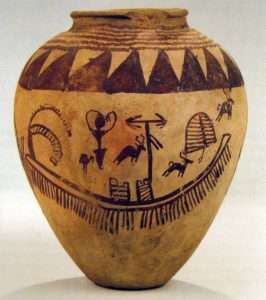
"The Rump is part of the Arabian megaconstellation of the Lion (al-asad). It lies well south of the rest of the Lion, so it may have been a later addition to the figure." Any ostrich?
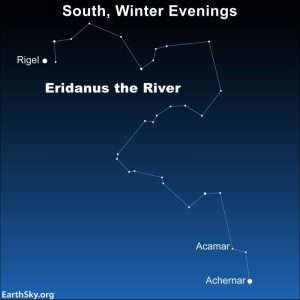
Orion appears 'upside down' in the Southern Hemisphere.
"We get drawn into this emotional quicksand because our state of mind is intimately connected with memory..." [Chapter one, 'Mindfulness' by M. Williams and D. Penman].
That statement could apply for anything - both subjective and objective - relative to a learning curve. That inner and outer one. From something unknown to becoming known.
'On Having No Head: Zen and the Rediscovery of the Obvious' / D. E. Harding.
"We are thinking at the edge, where the shoreline of sense meets the wild ocean of mystery." [From the book by T. Freke and P. Gandy],
Wet/dry?
 J. Boehme and the biblical Enoch were others. Question. What generation [i.e.,represented as a 'number'] was Enoch identified with? Question 2. What does it all mean? What does it represent?
J. Boehme and the biblical Enoch were others. Question. What generation [i.e.,represented as a 'number'] was Enoch identified with? Question 2. What does it all mean? What does it represent?
Side note: High Sparrow {Game of Thrones} was a 'cobbler'. Coincidence? Or is the author/'creator' of same using 'story telling' as a means...?
And/or: ''The name of the Chinese tile game Mah-jong translates into English as Sparrow.'' [The Chase / 25.4.18].
Roof tiles?
Side step: "The septenary is the sacred number in all theogonies and in all symbols, because it is composed of the triad and the tetrad...The Septenary is said to be the great biblical number, the key to the 'creation' of Moses and the symbol ''of all religions''. [Extract taken from the book by E. Levi]. Recall the 'meaning' of ''Moses''.
''Three and four''?
Same principles [concepts?] but in a plainer language; a more direct one -"...the spiritual three and the material four, were used time and again..." ['Mystery of Numbers'. Mentioned elsewhere].
Question. Exodus 12:40 ?

''Three and four?'' and/or ''yellow''?

Happy or Sad?
From a different perspective, with something extra: "The number seven, or septenary, is the sacred number of all theogonies and all symbols, because it is composed of the triad and tetrad....Seven can be thought of as a combination of the 'triangle' and 'cross' - the alchemical symbol of Sulphur - which became the symbol of Self-Consciousness.....Each of the 'planets' has a dominant center of influence in the physical body. These centers are called ''wheels'' or chakras by the Hindus....They correspond to the seven centers in the body. Two in the 'brain', one in the 'throat'. These are the three which are 'above' and they correspond roughly to the triangle in the Sulphur symbol {'Summer triangle'?}. The other four are in the 'trunk', and they correspond roughly to the cross in the Sulphur symbol." [Pages 37/43 of the book by P. F. Case. Vol 1].
Strong and/or Weak 'legs' ??

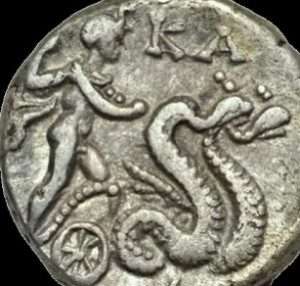

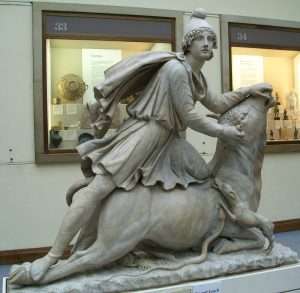
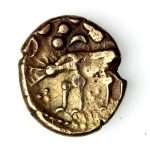 Side note: At some time or another in the life of the neophyte on the Path, the Beast within must be faced. If it is not faced, then the Beast will emerge and confront the neophyte. This esoteric truth is expressed to perfection in the ancient mythology of Theseus and the Minotaur. The monster (which was created by the sin of an unlawful human sexual encounter)” is imprisoned in a labyrinth. The labyrinth, with its winding corridors, is an image of the sausage-like brain within the cranium of man. In these corridors of the brain there roams a Minotaur which we must face with the courage of Theseus. When the dark beast is tackled on the inside of the labyrinth — within the secret places of the mind — the conflict which results is that which in religious disciplines is called the Dark Night of the Soul.”! When the creature comes ravaging from without, through the tunnels of maya, then it is called the Testing.....
Side note: At some time or another in the life of the neophyte on the Path, the Beast within must be faced. If it is not faced, then the Beast will emerge and confront the neophyte. This esoteric truth is expressed to perfection in the ancient mythology of Theseus and the Minotaur. The monster (which was created by the sin of an unlawful human sexual encounter)” is imprisoned in a labyrinth. The labyrinth, with its winding corridors, is an image of the sausage-like brain within the cranium of man. In these corridors of the brain there roams a Minotaur which we must face with the courage of Theseus. When the dark beast is tackled on the inside of the labyrinth — within the secret places of the mind — the conflict which results is that which in religious disciplines is called the Dark Night of the Soul.”! When the creature comes ravaging from without, through the tunnels of maya, then it is called the Testing.....